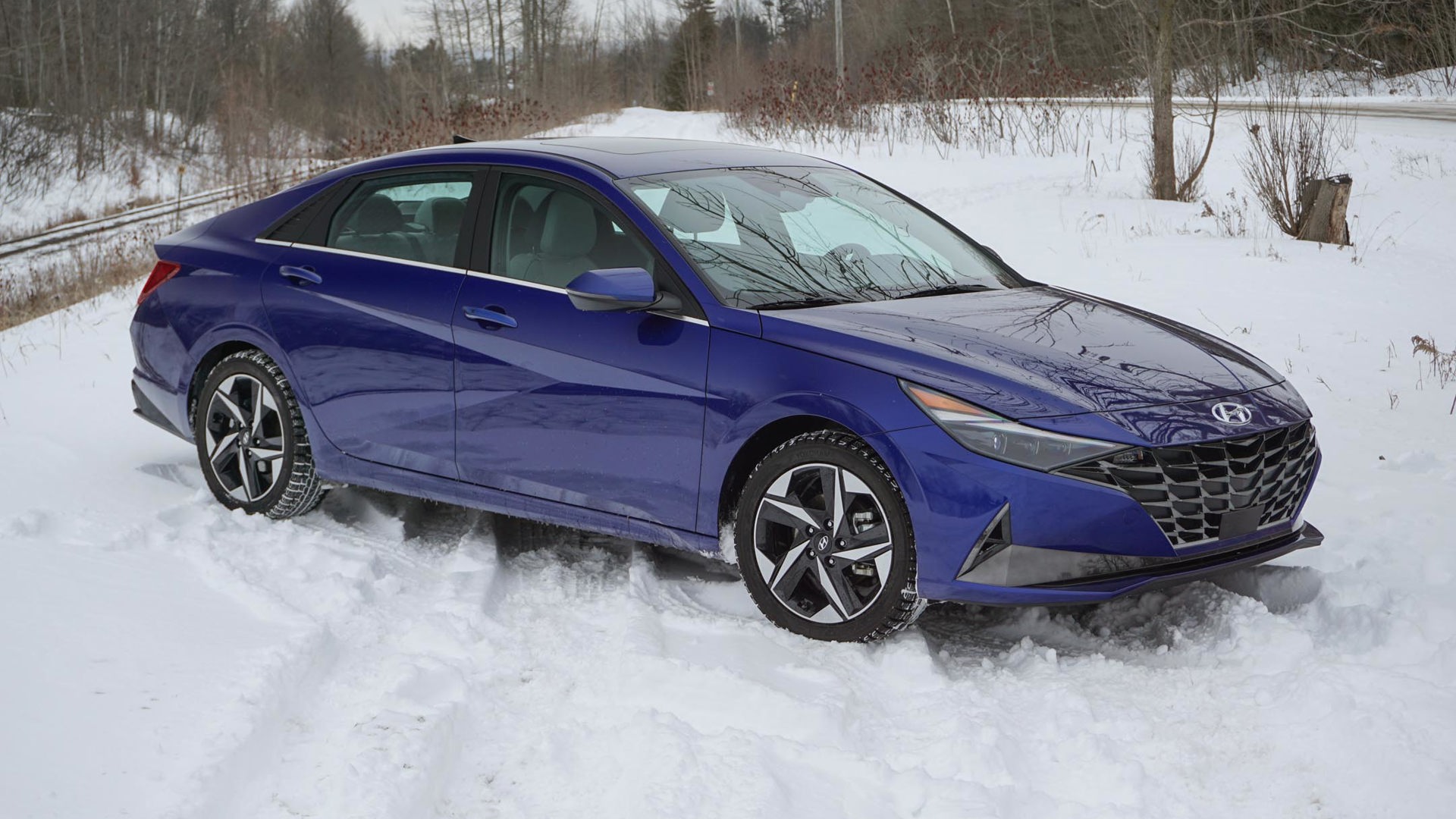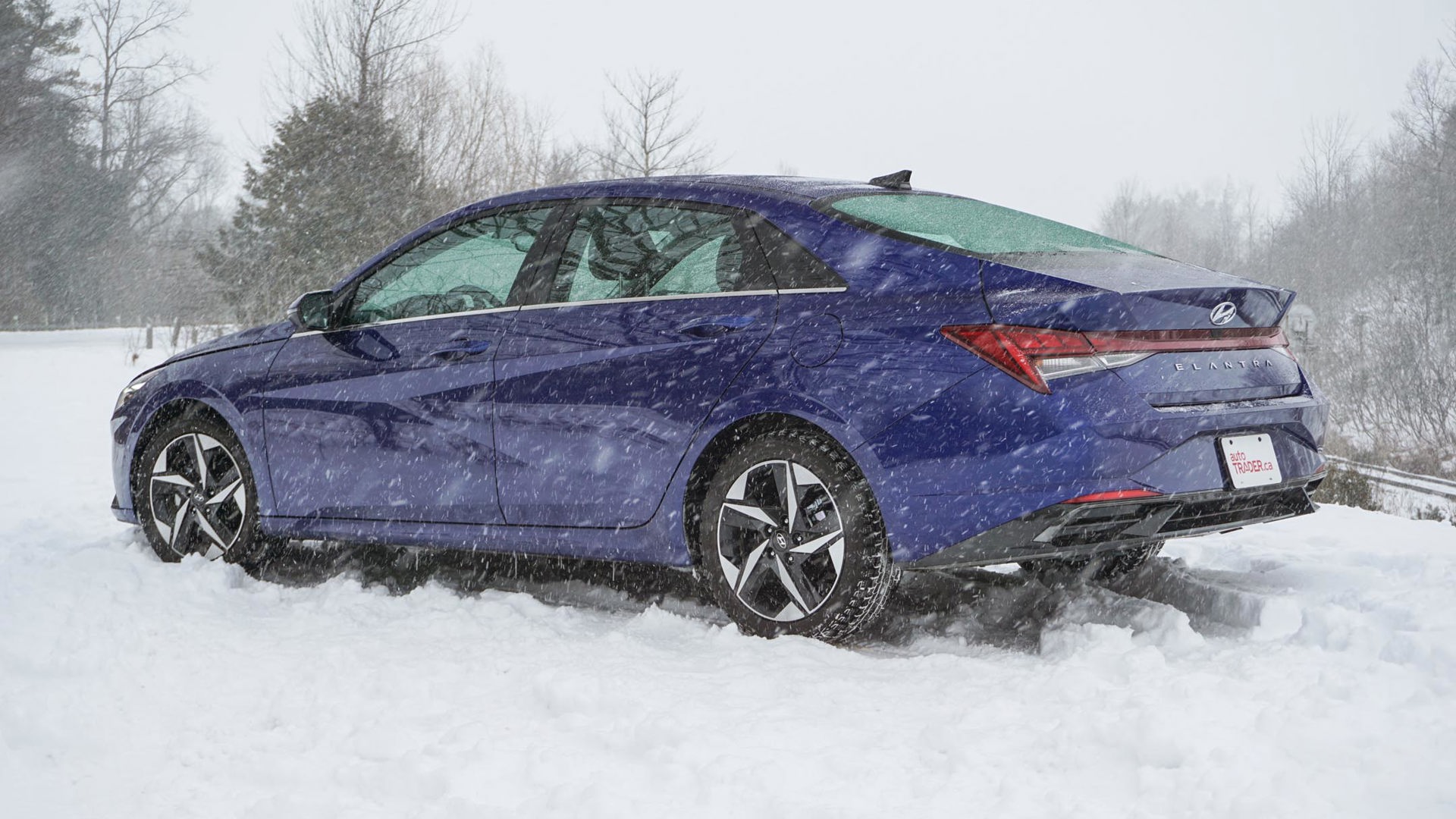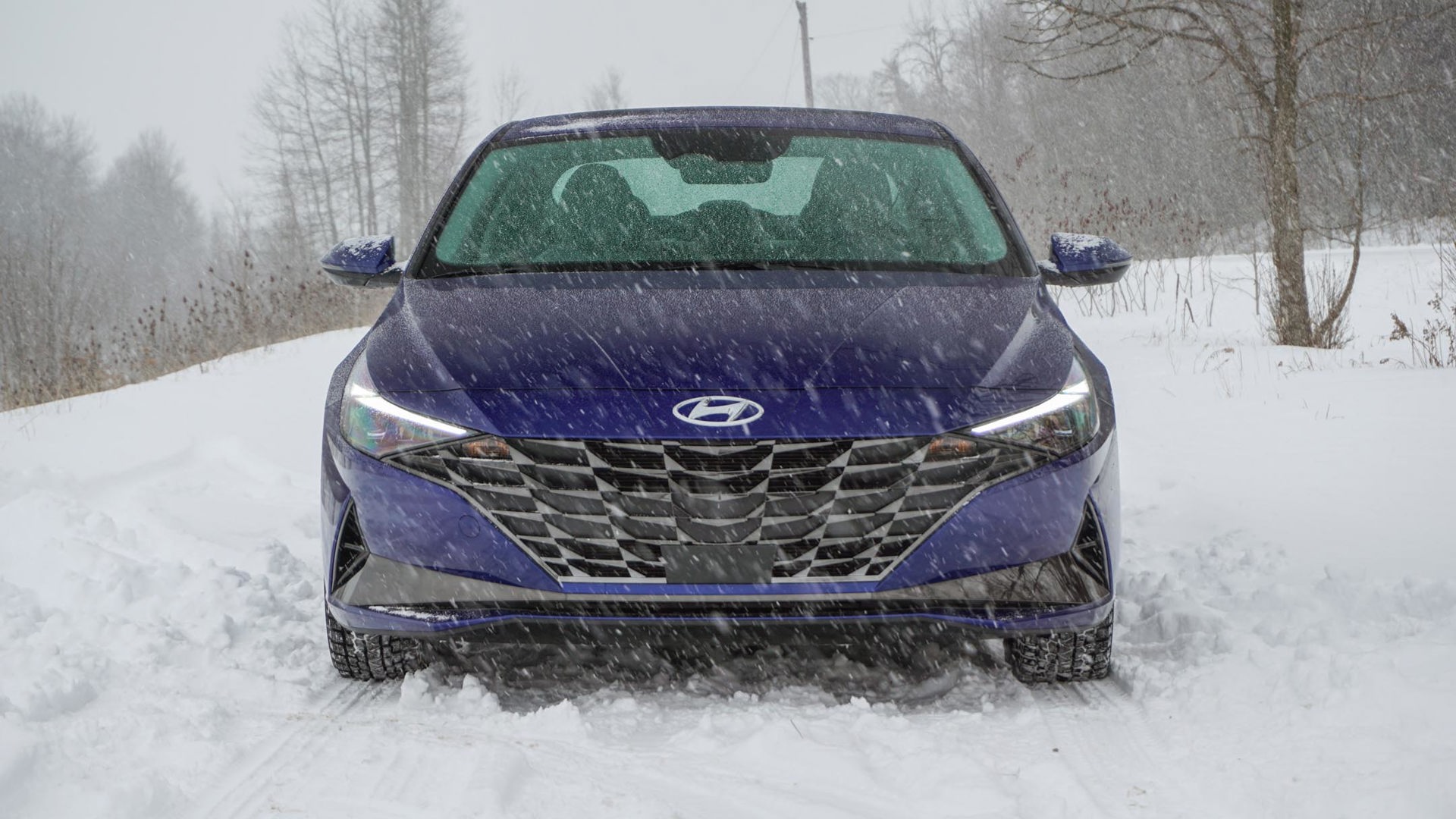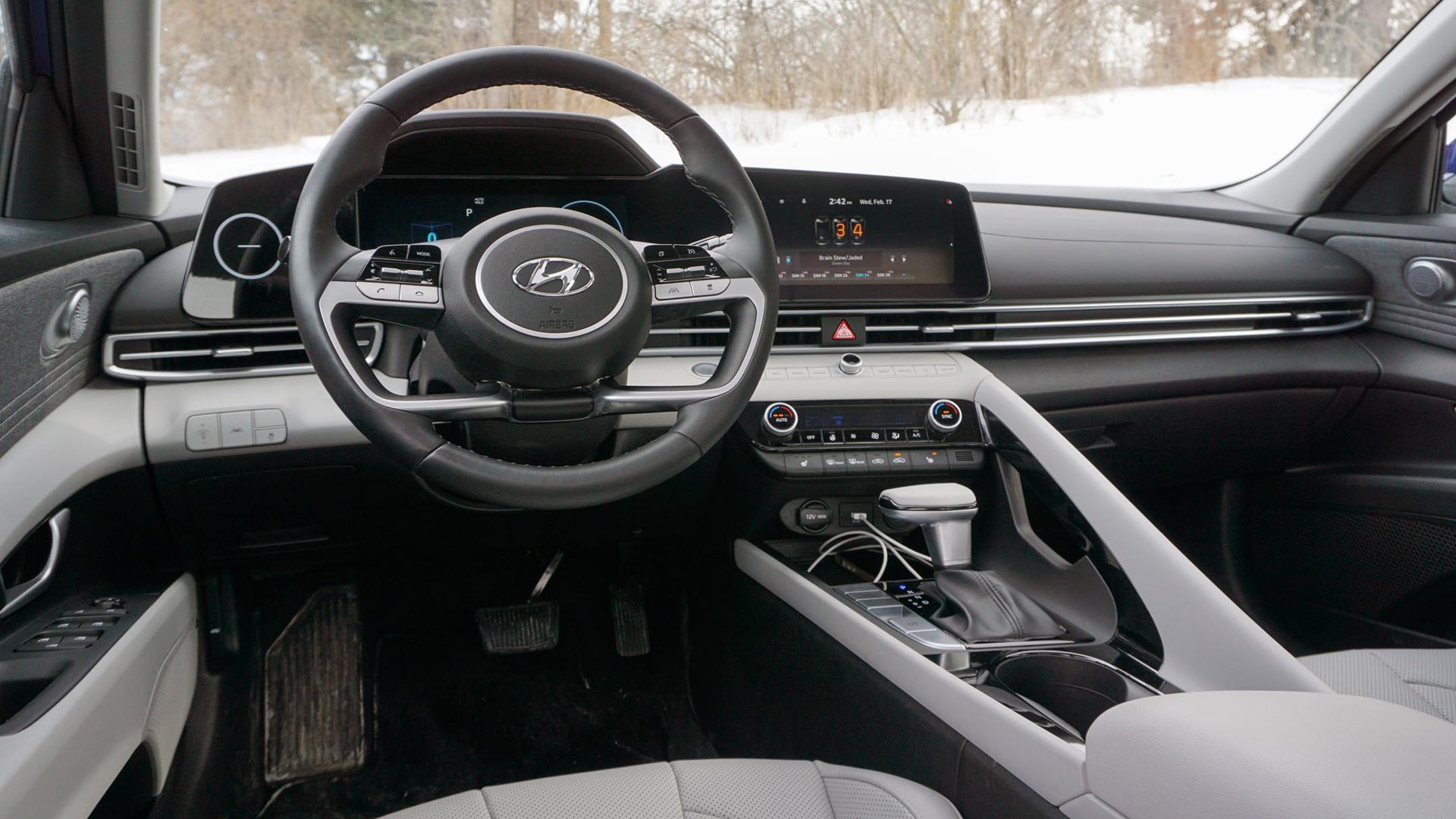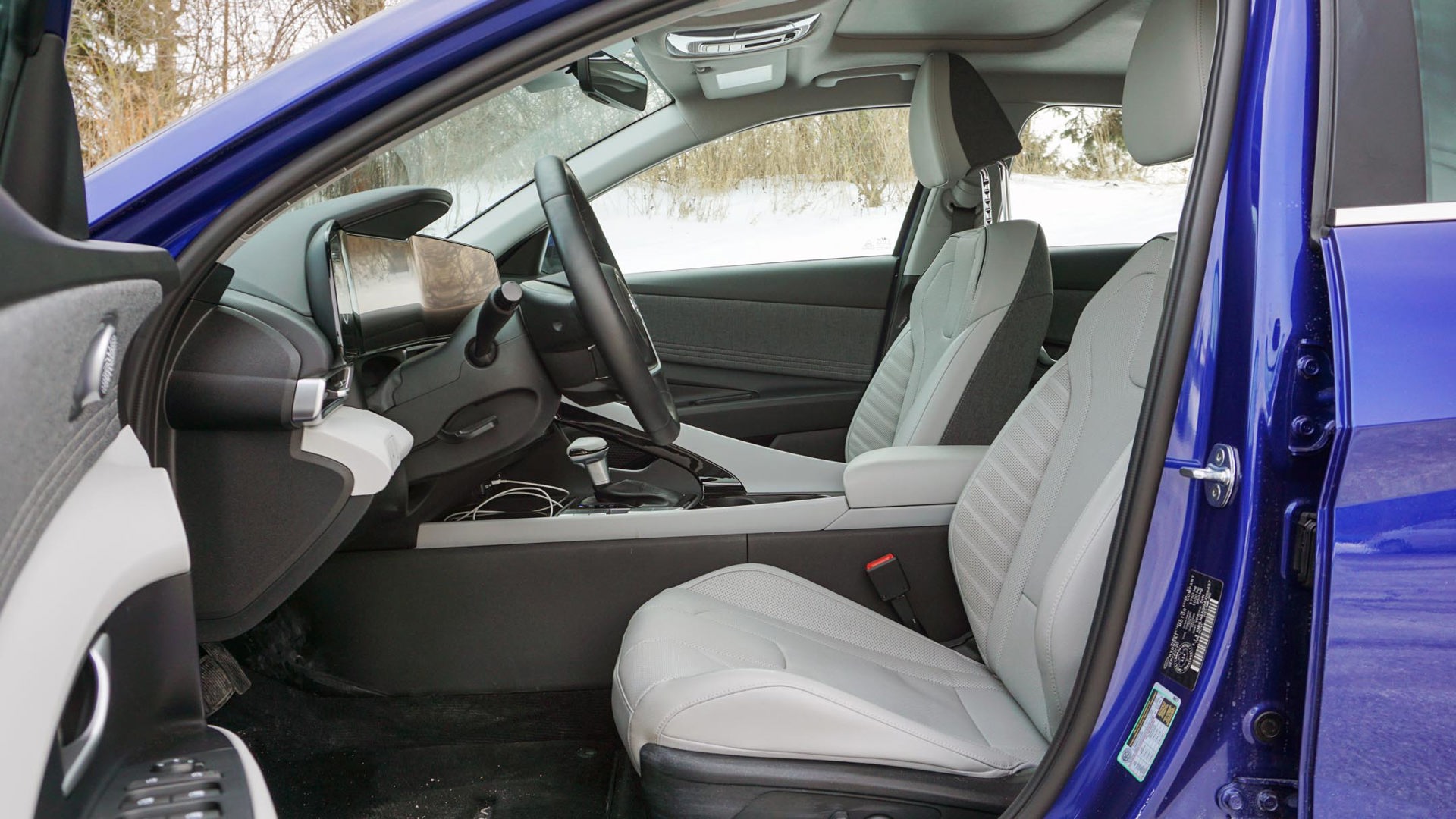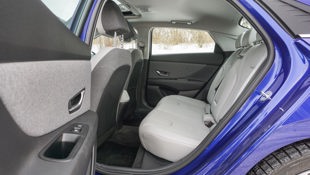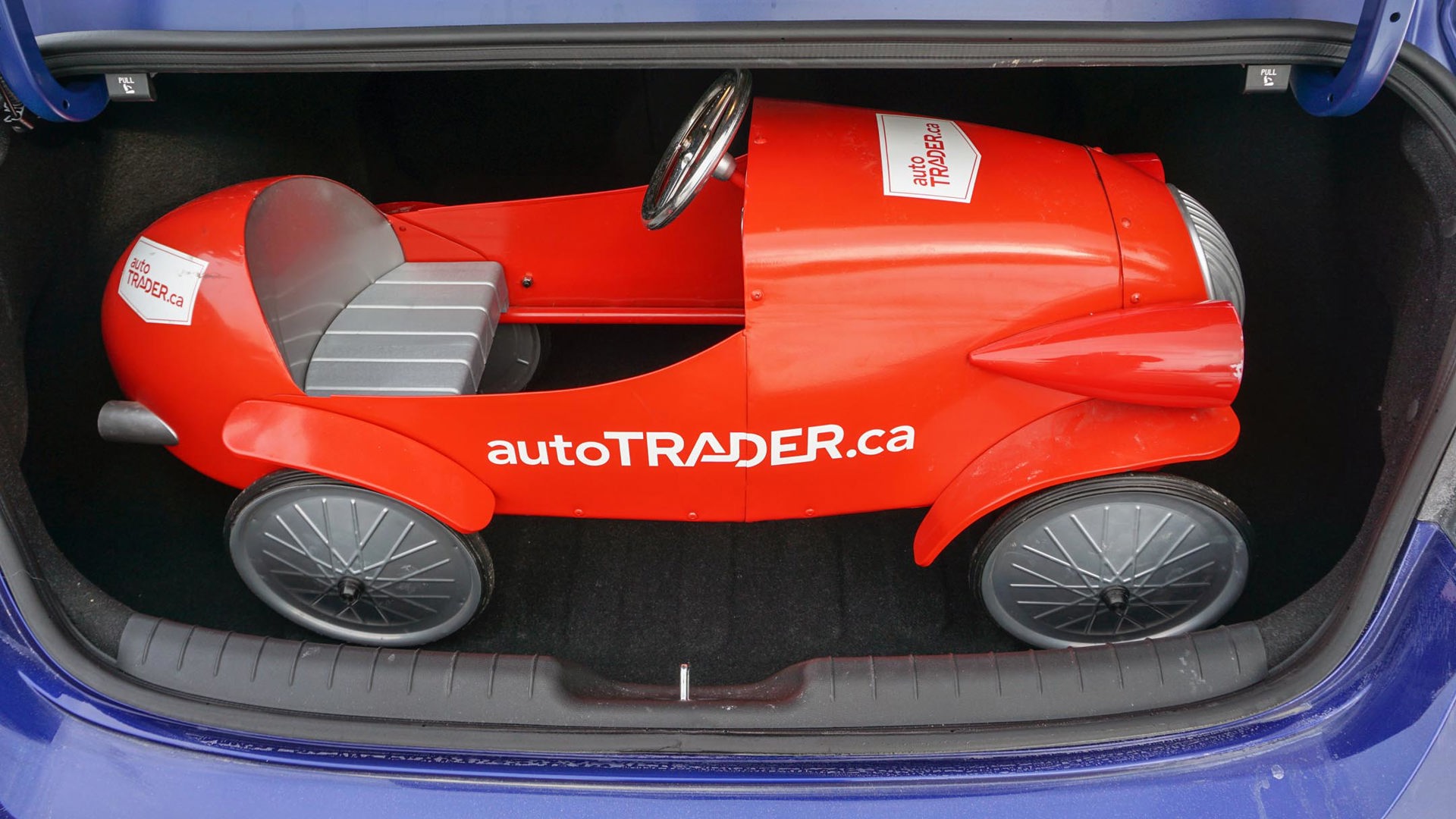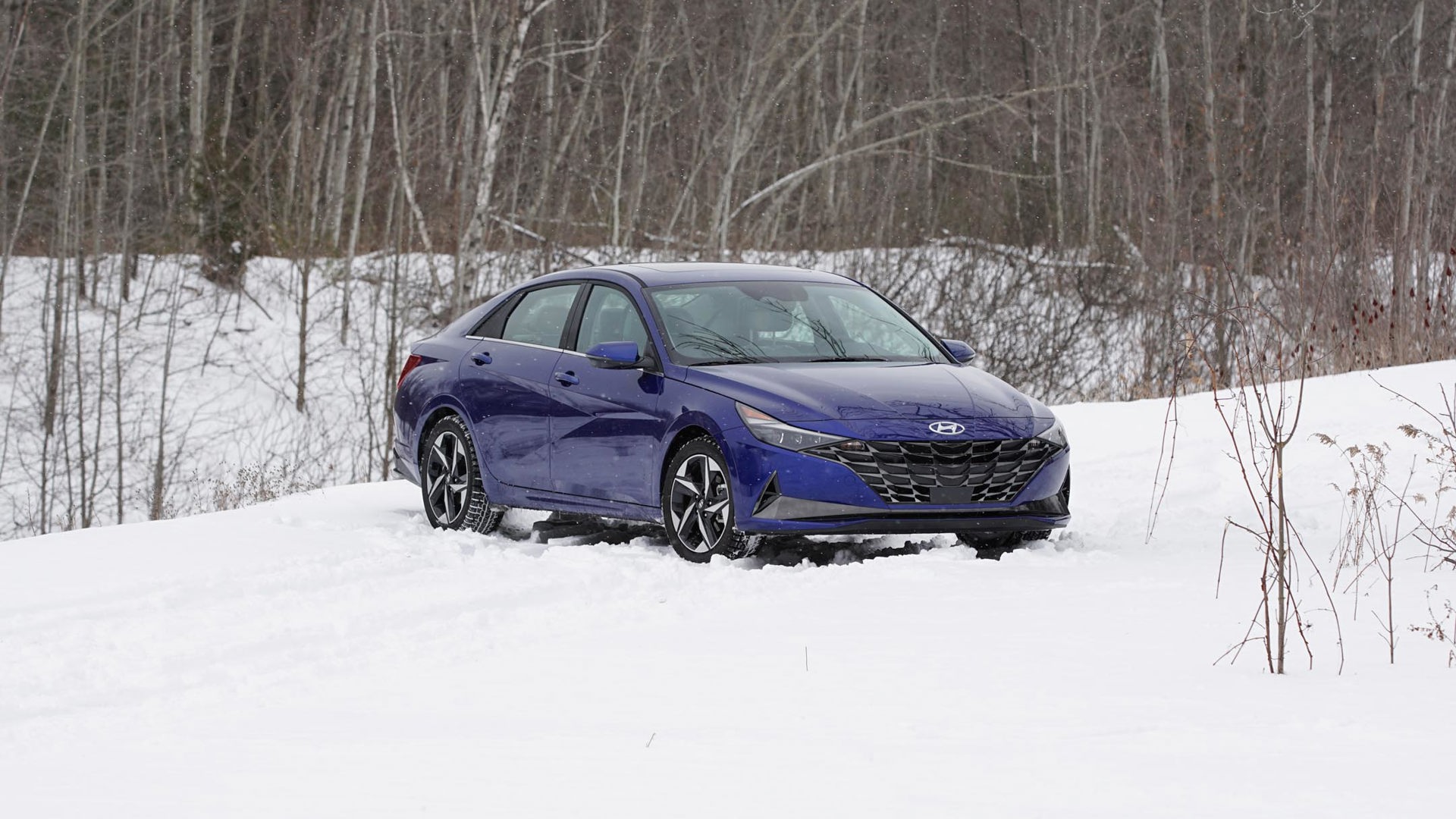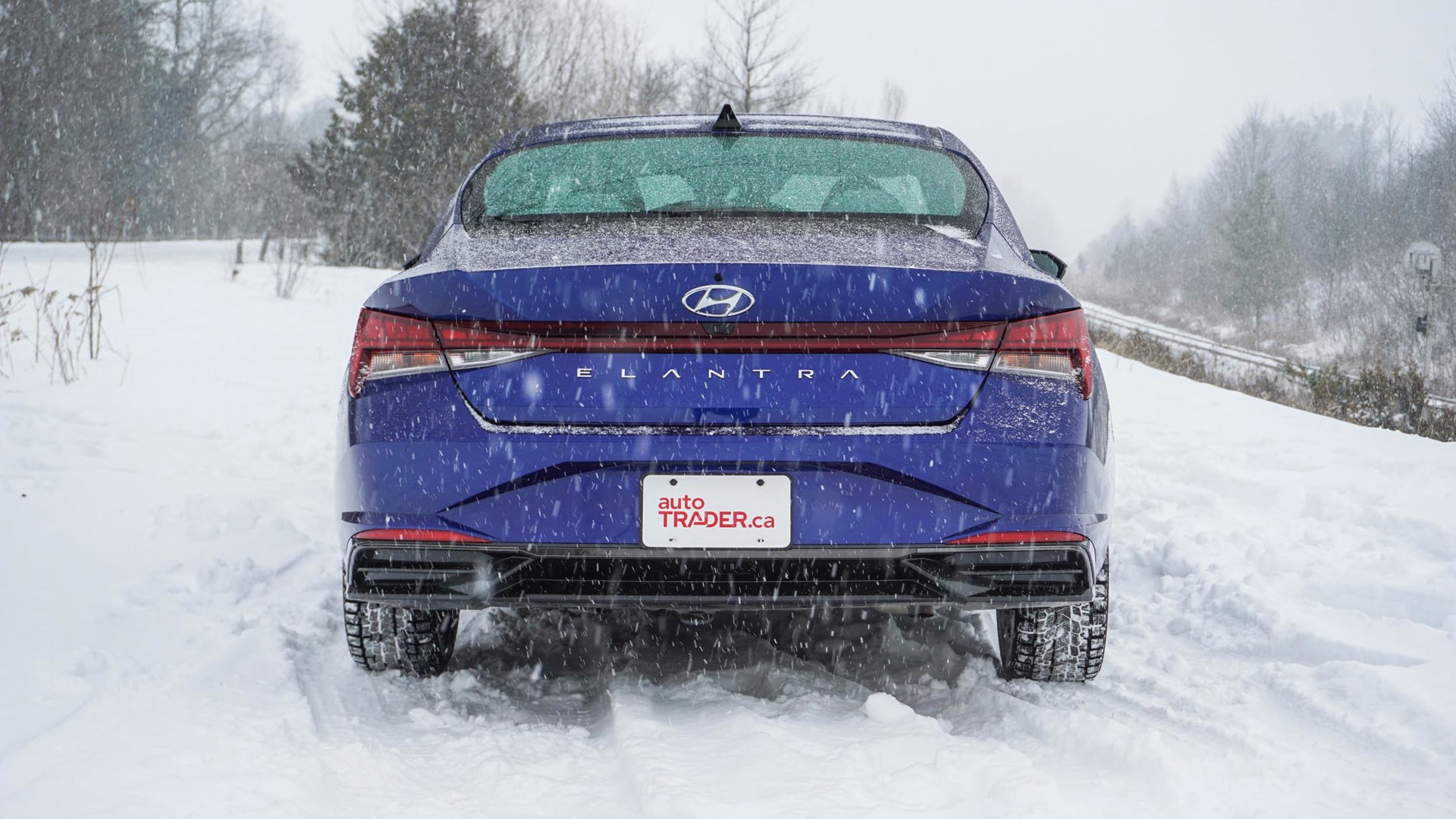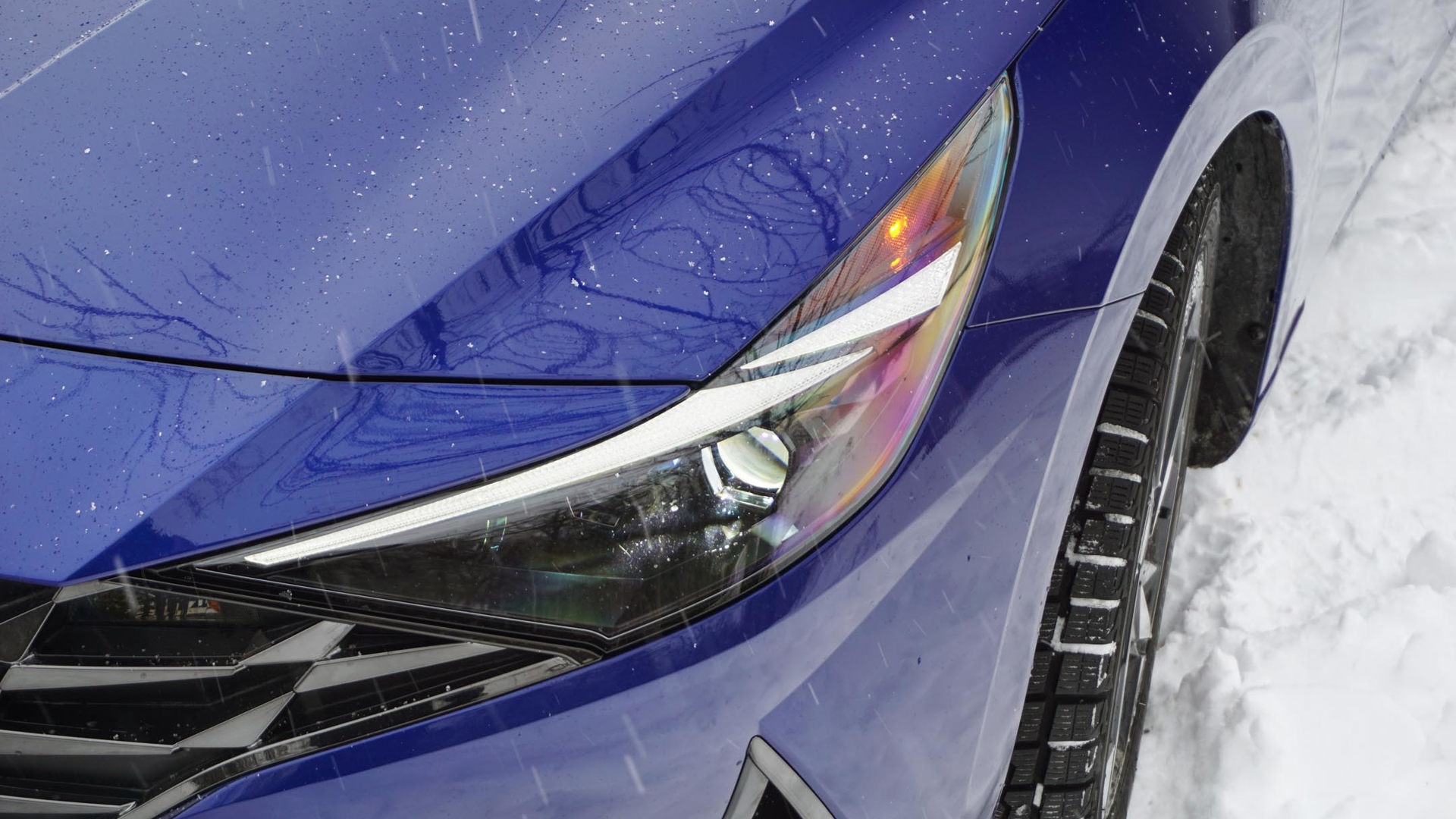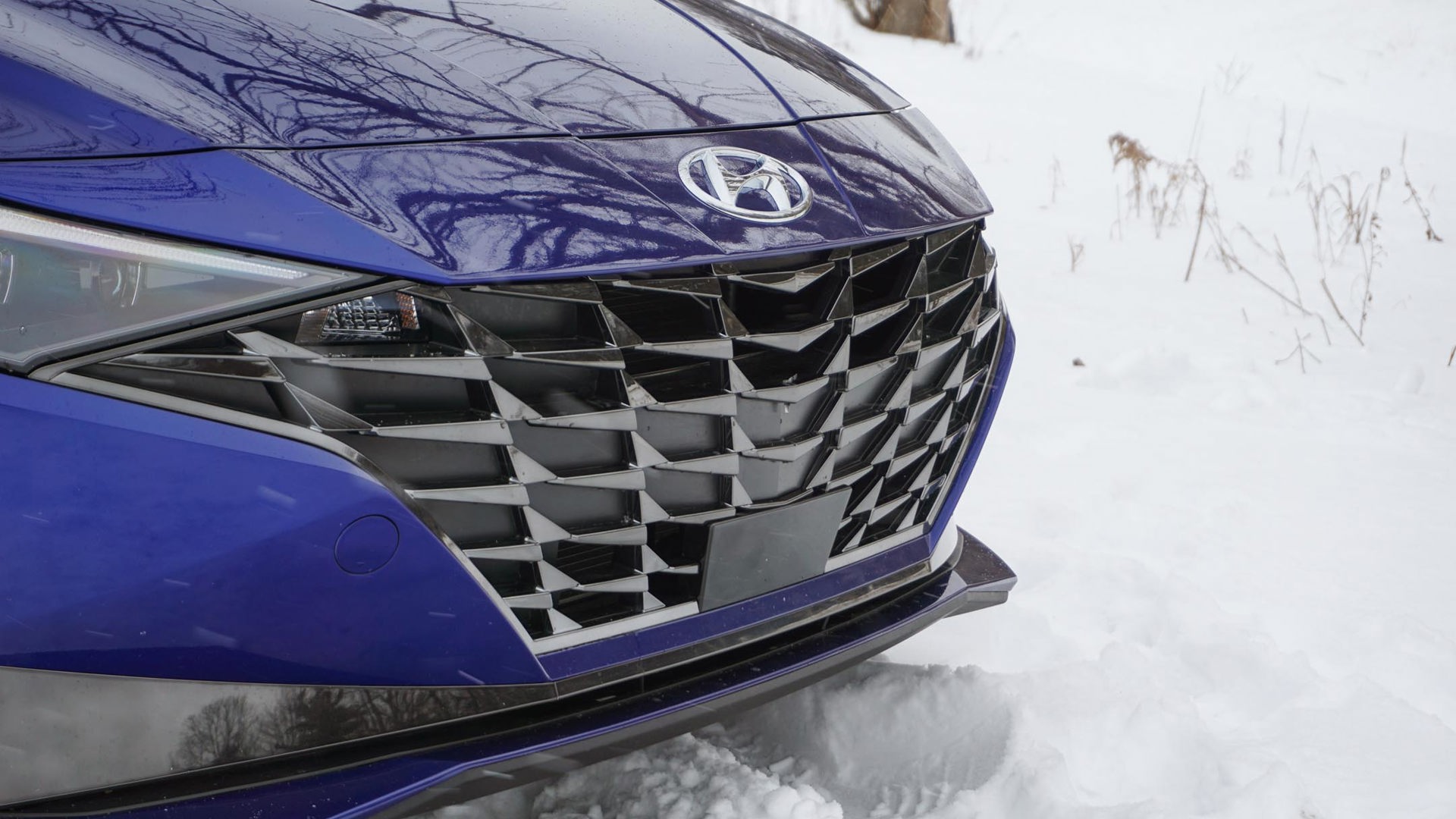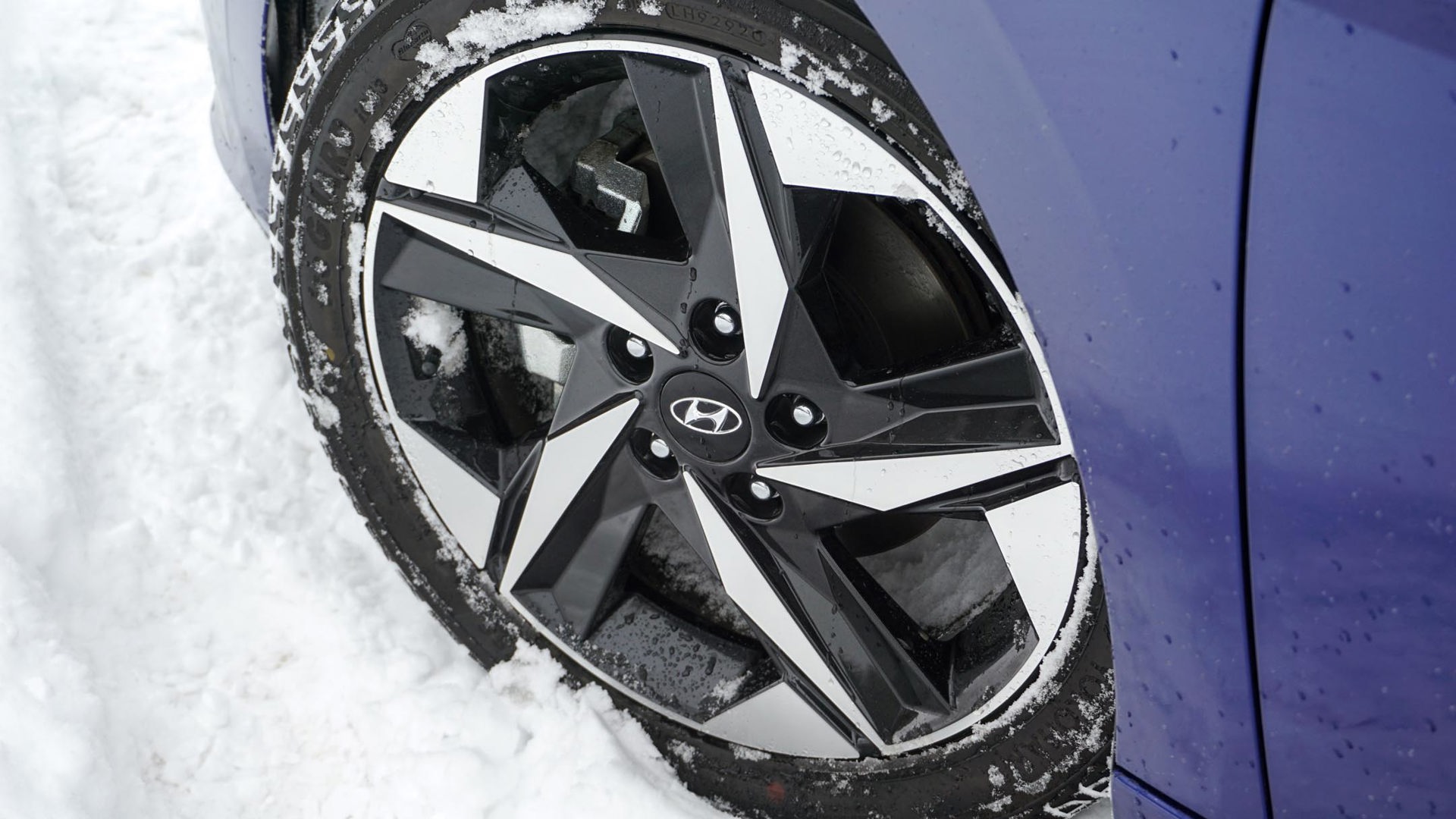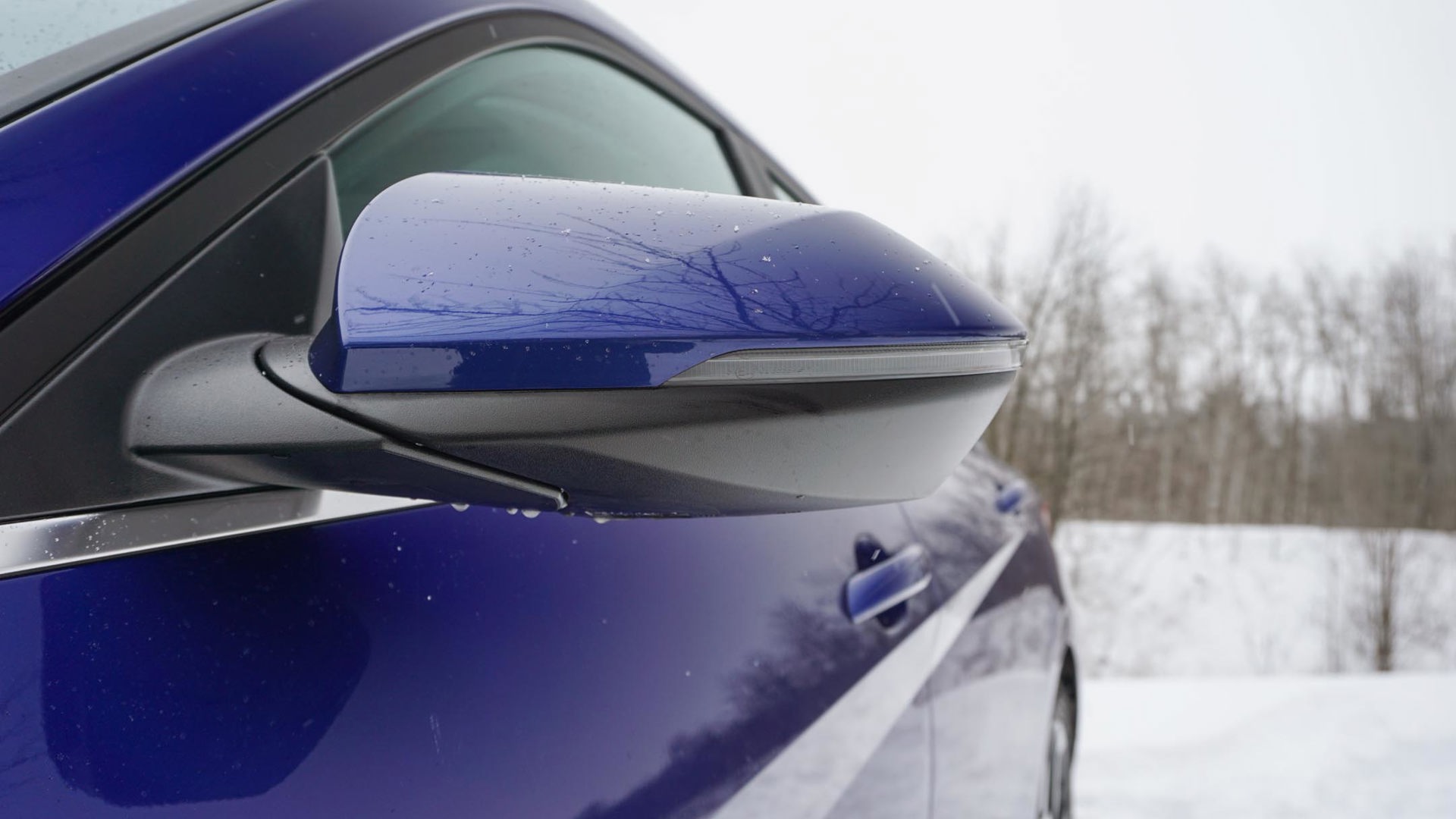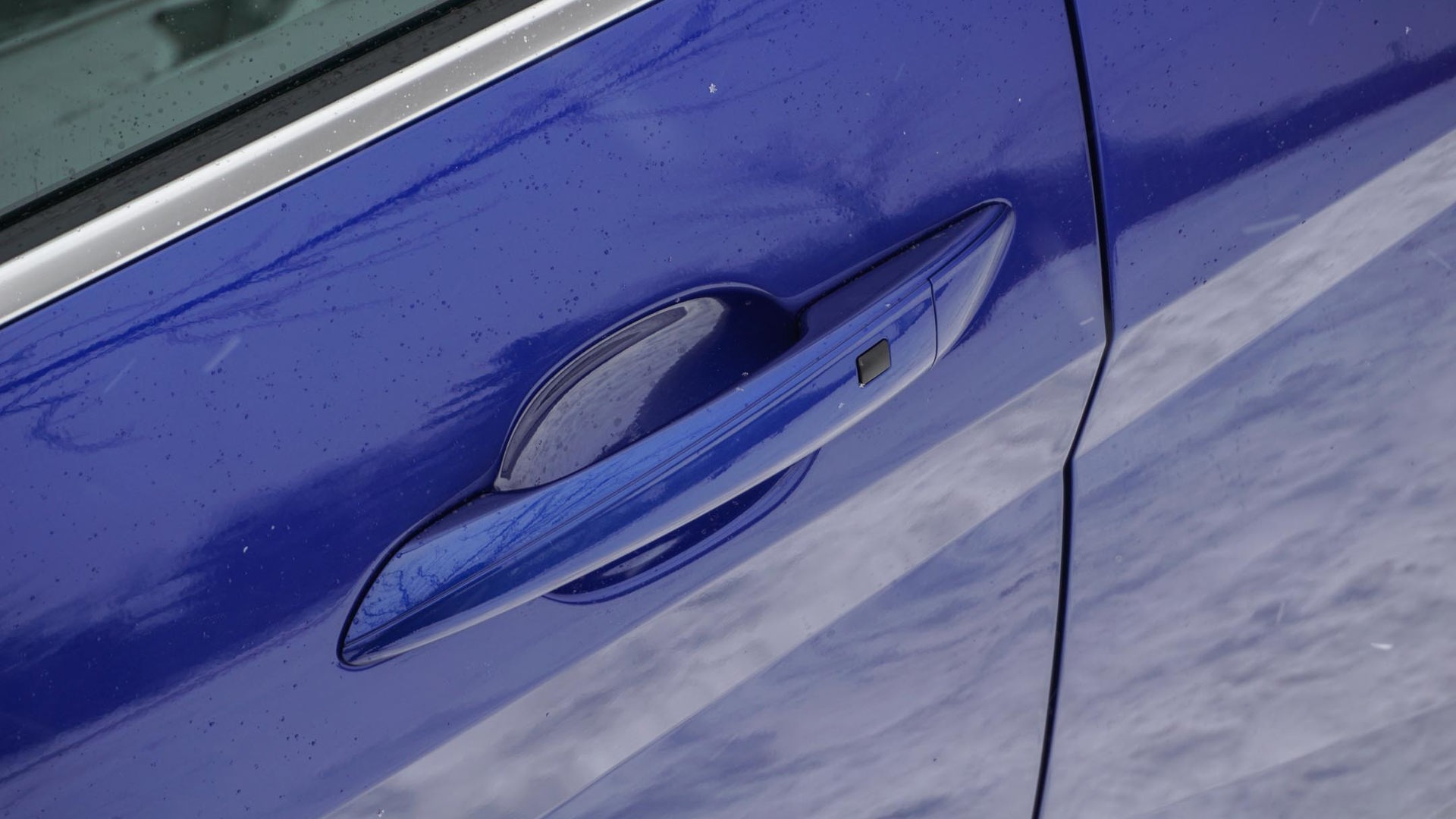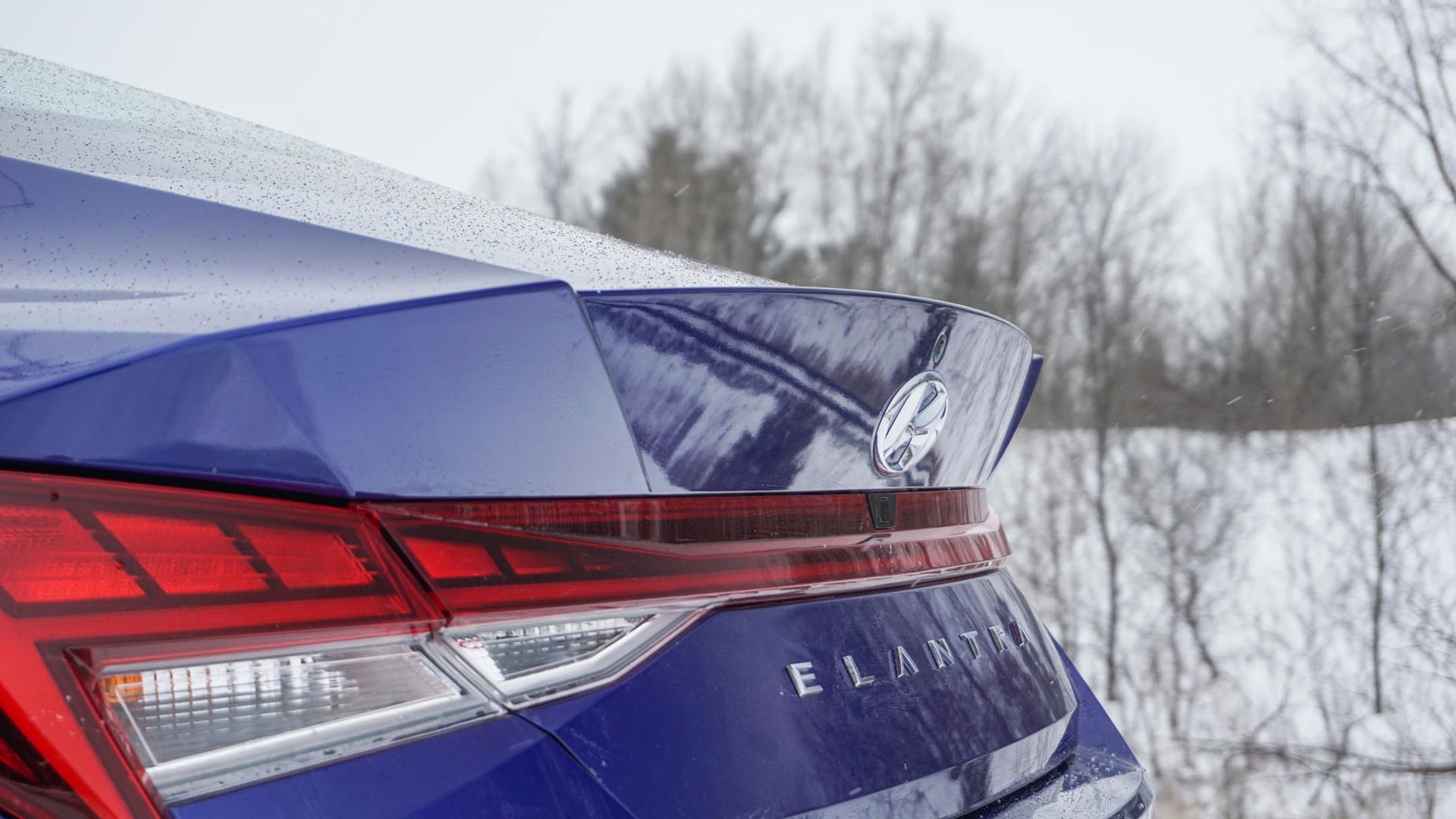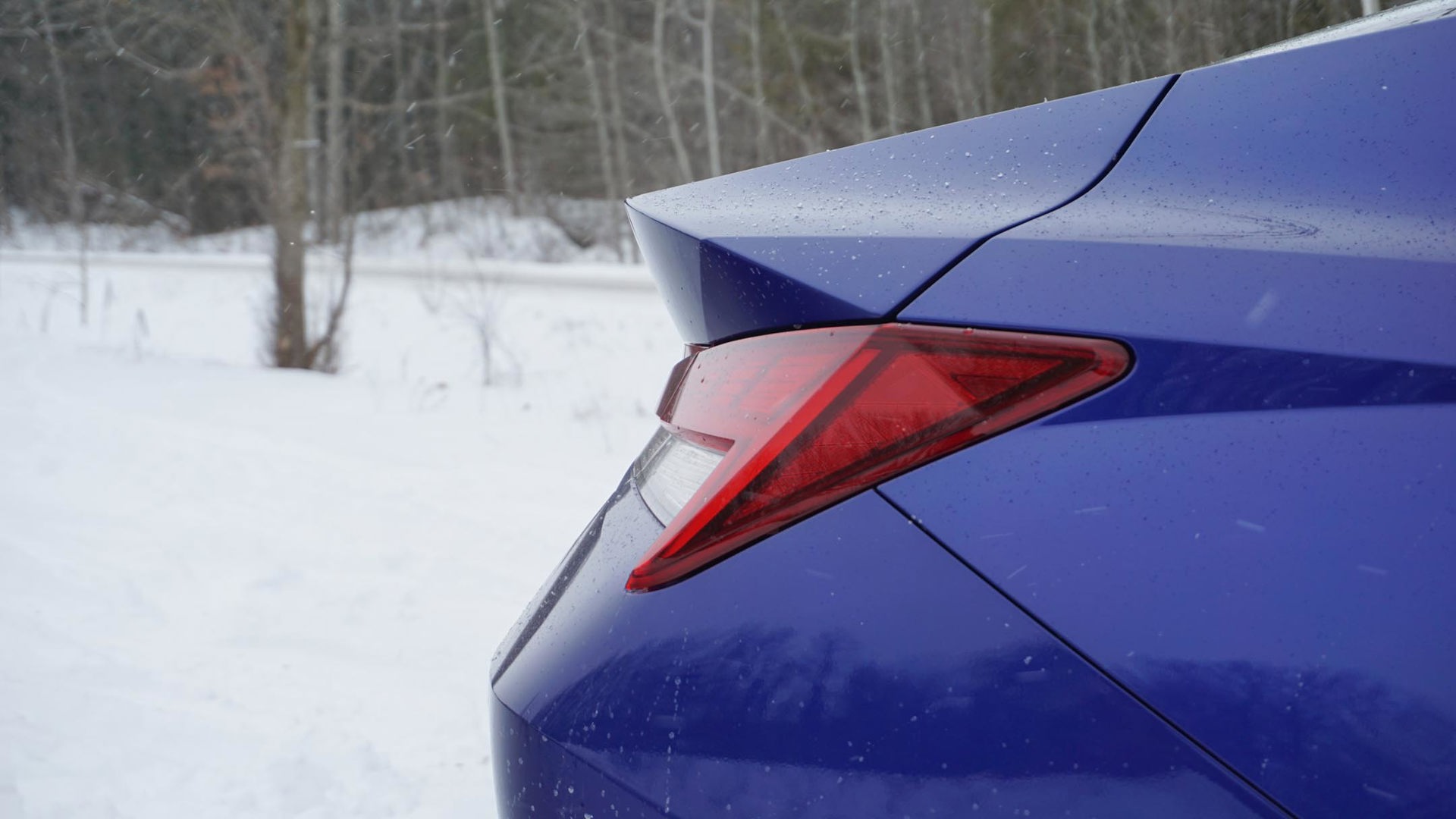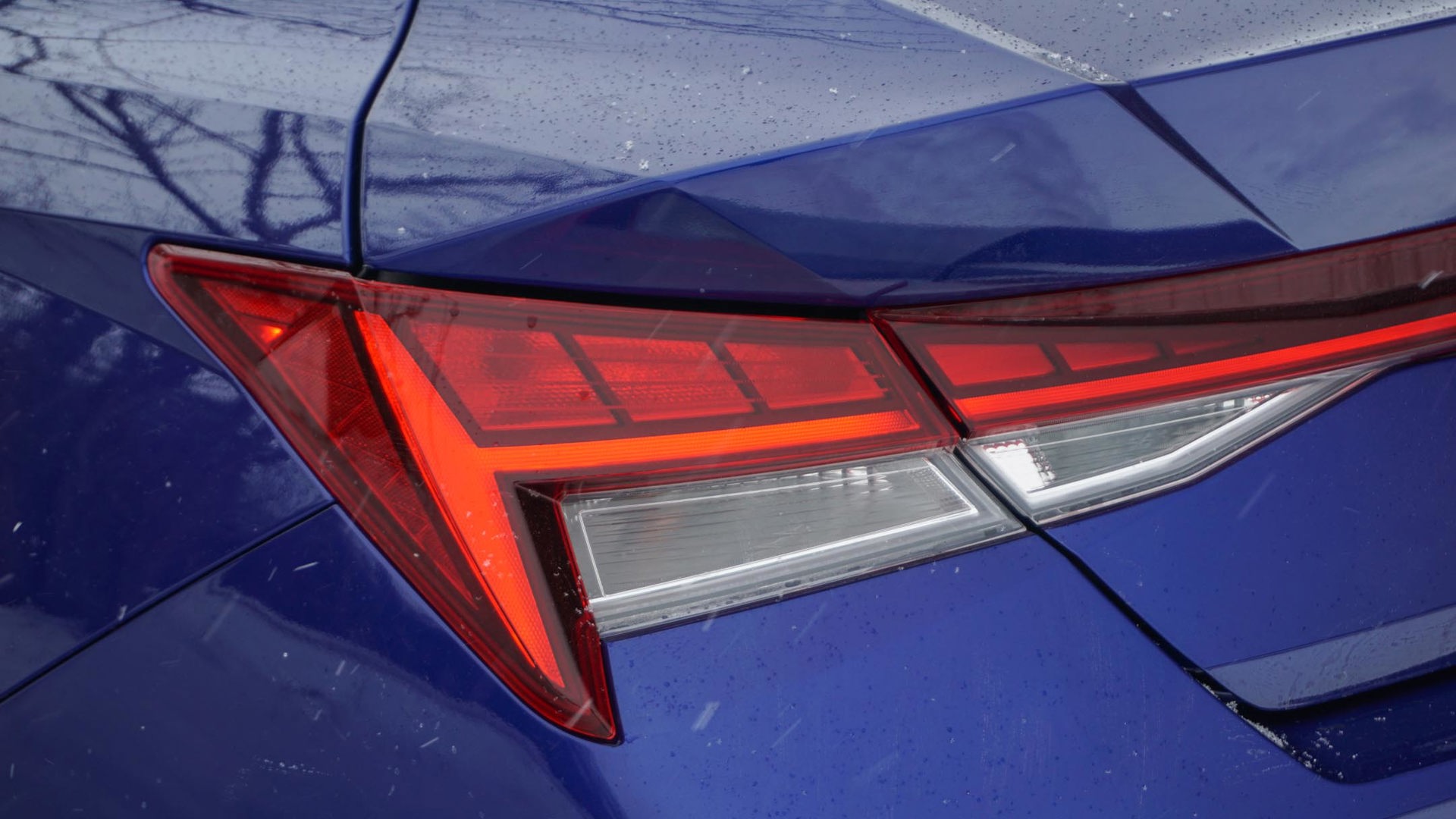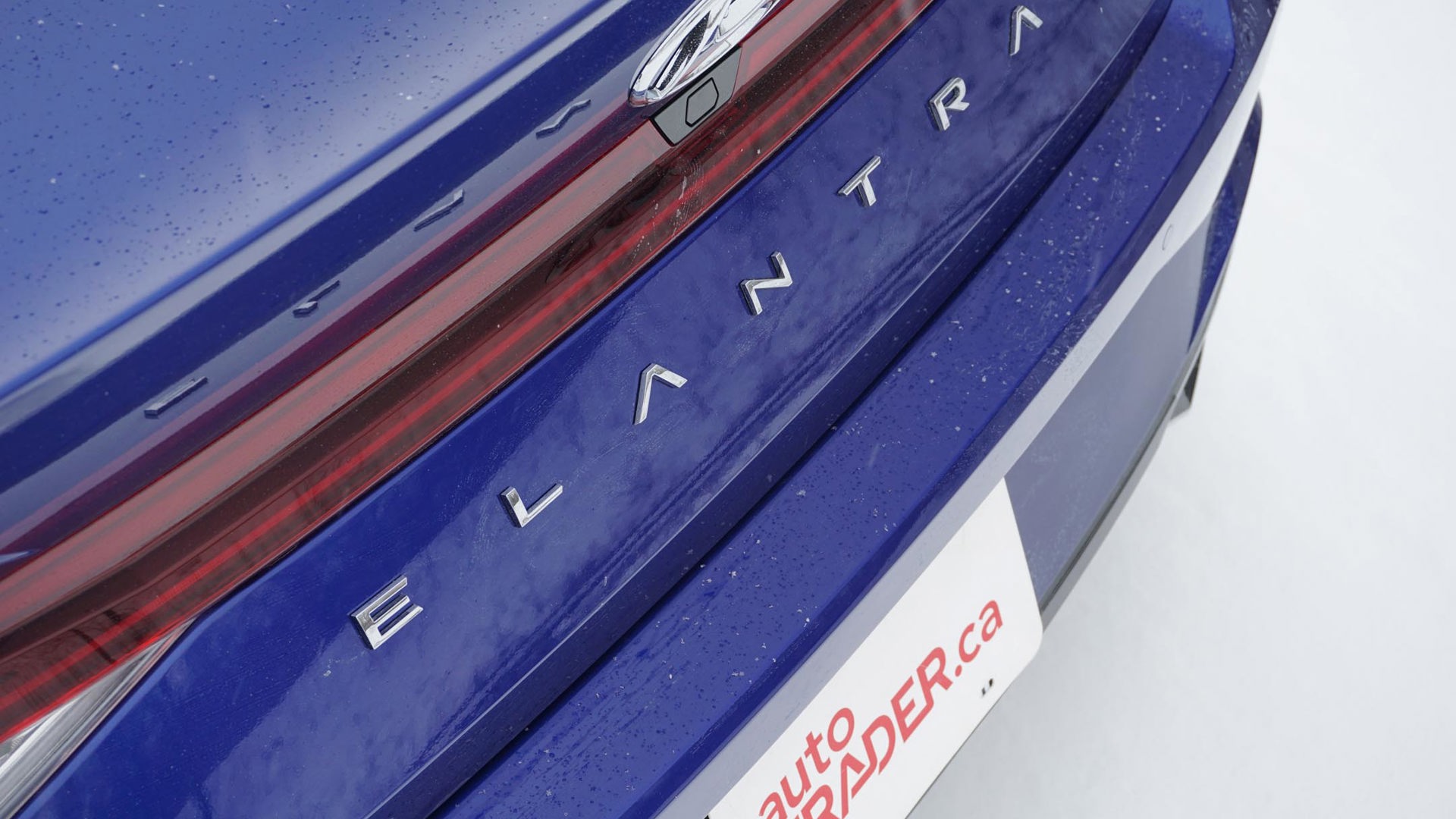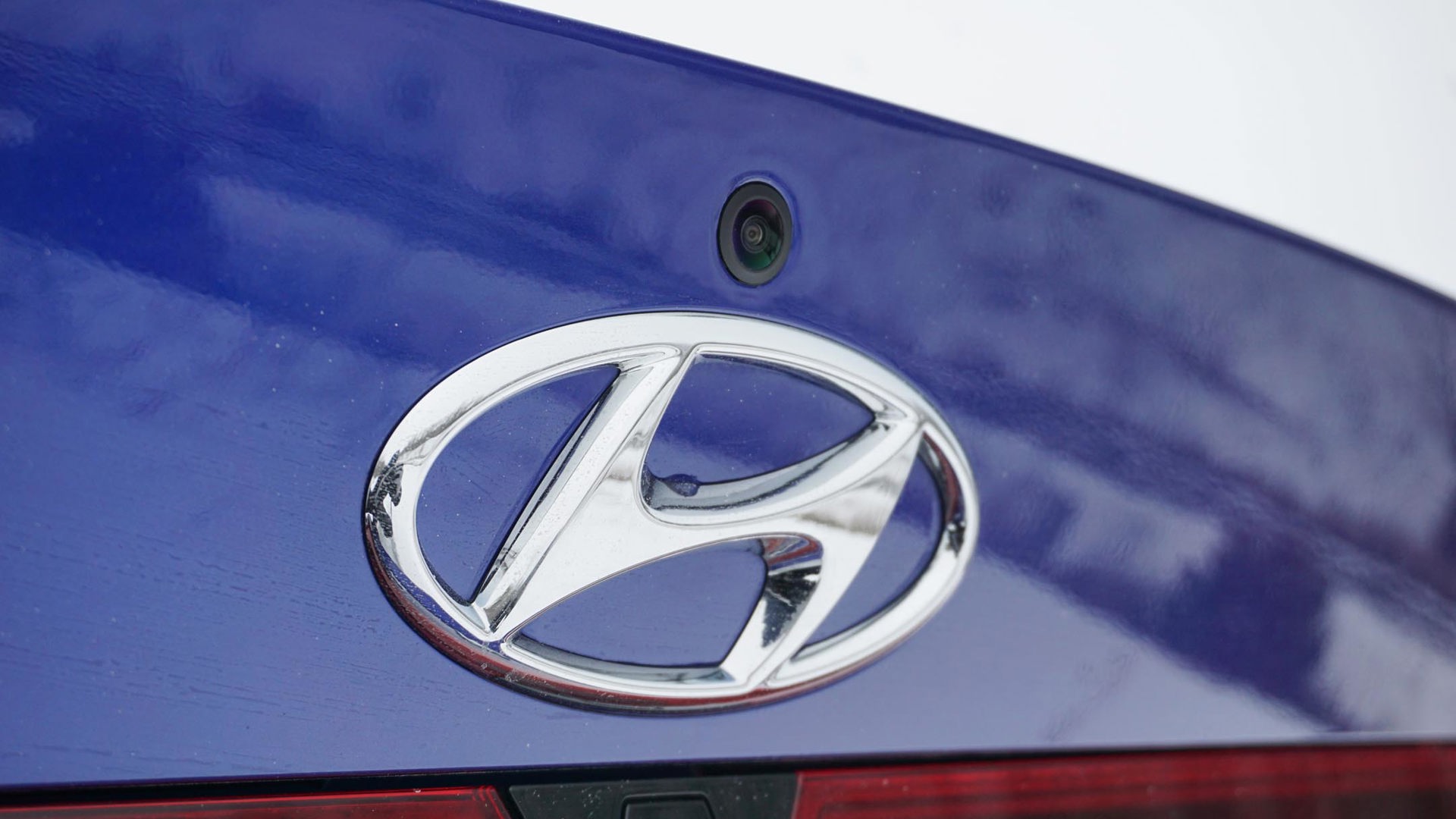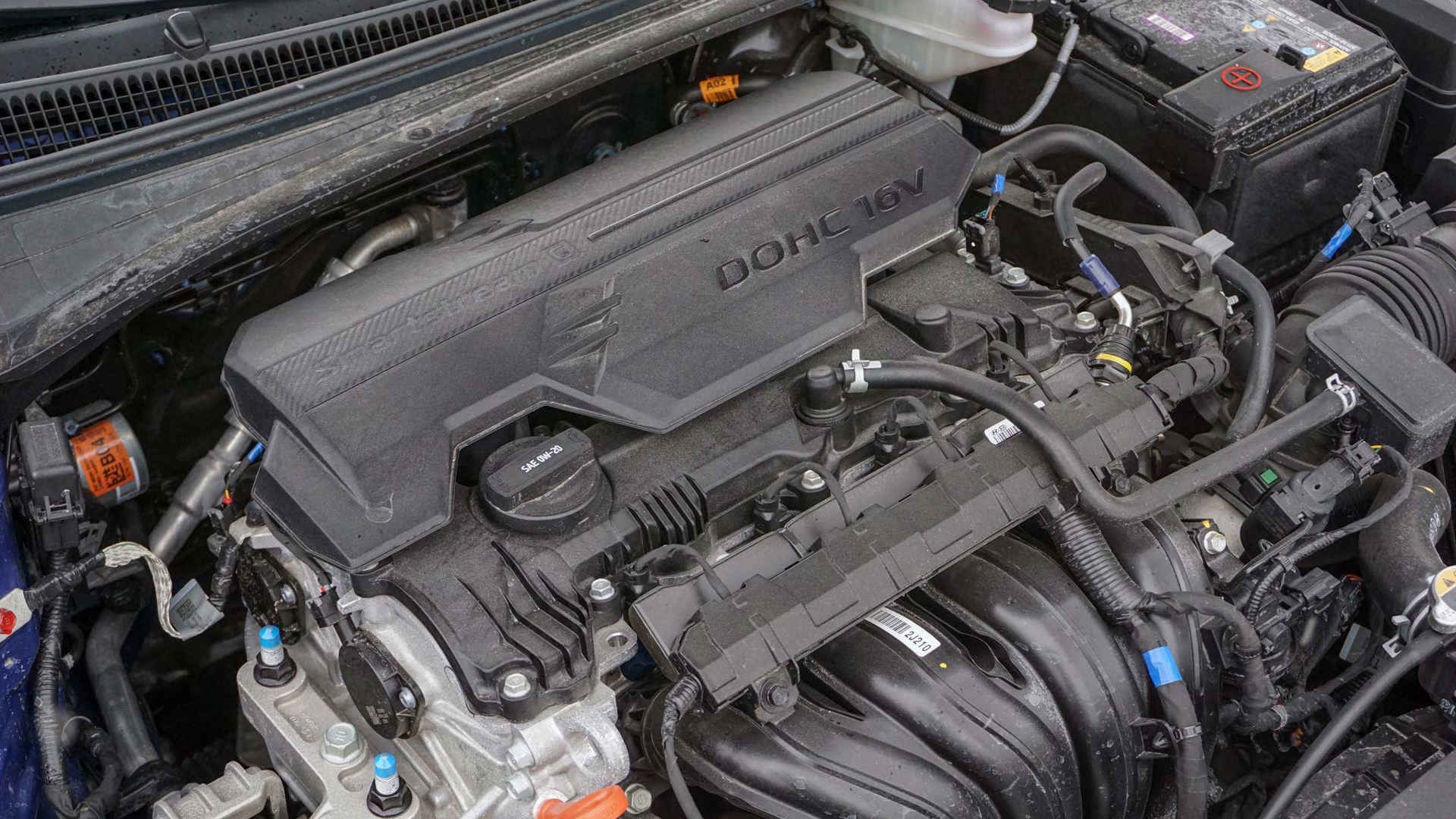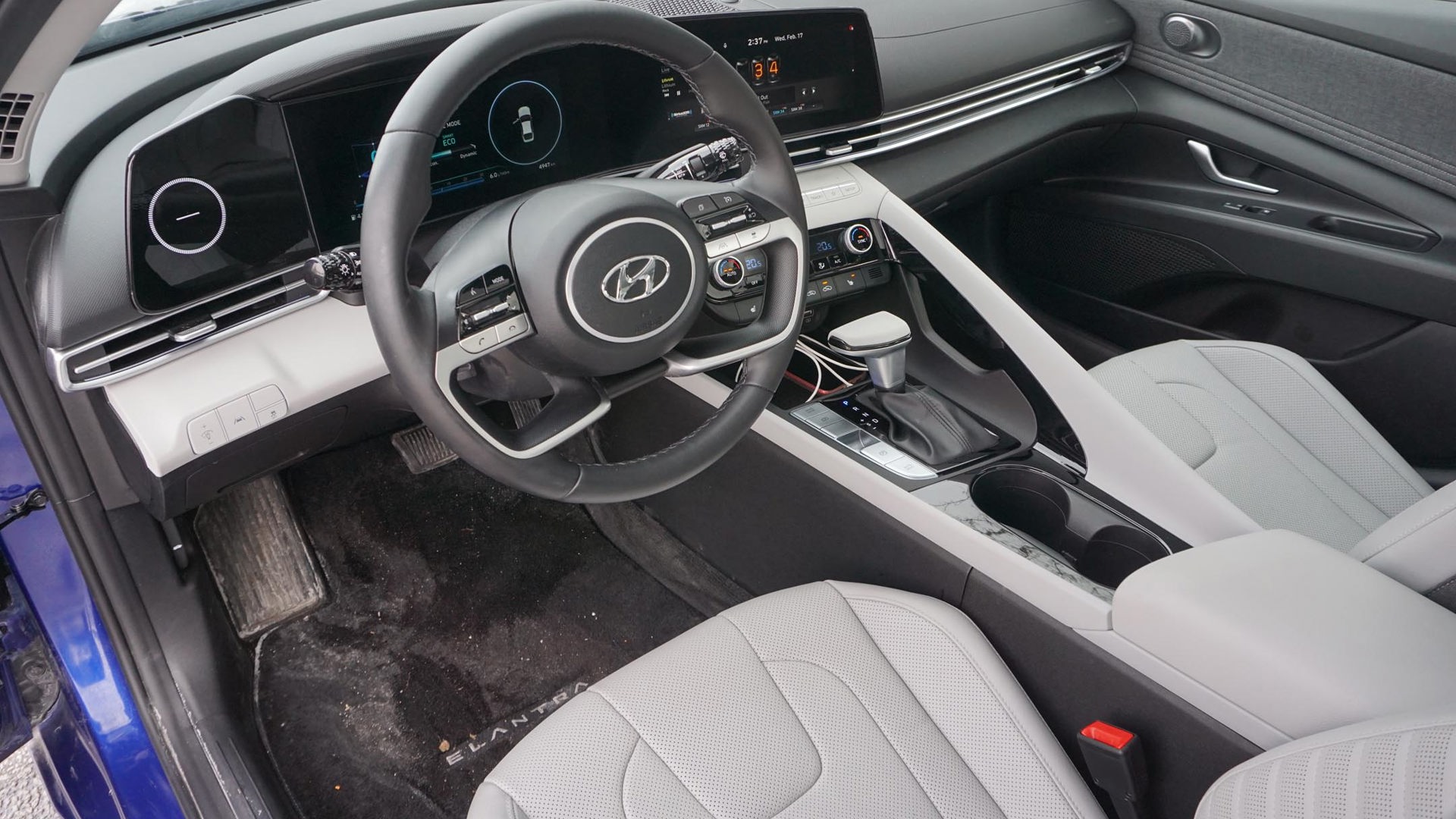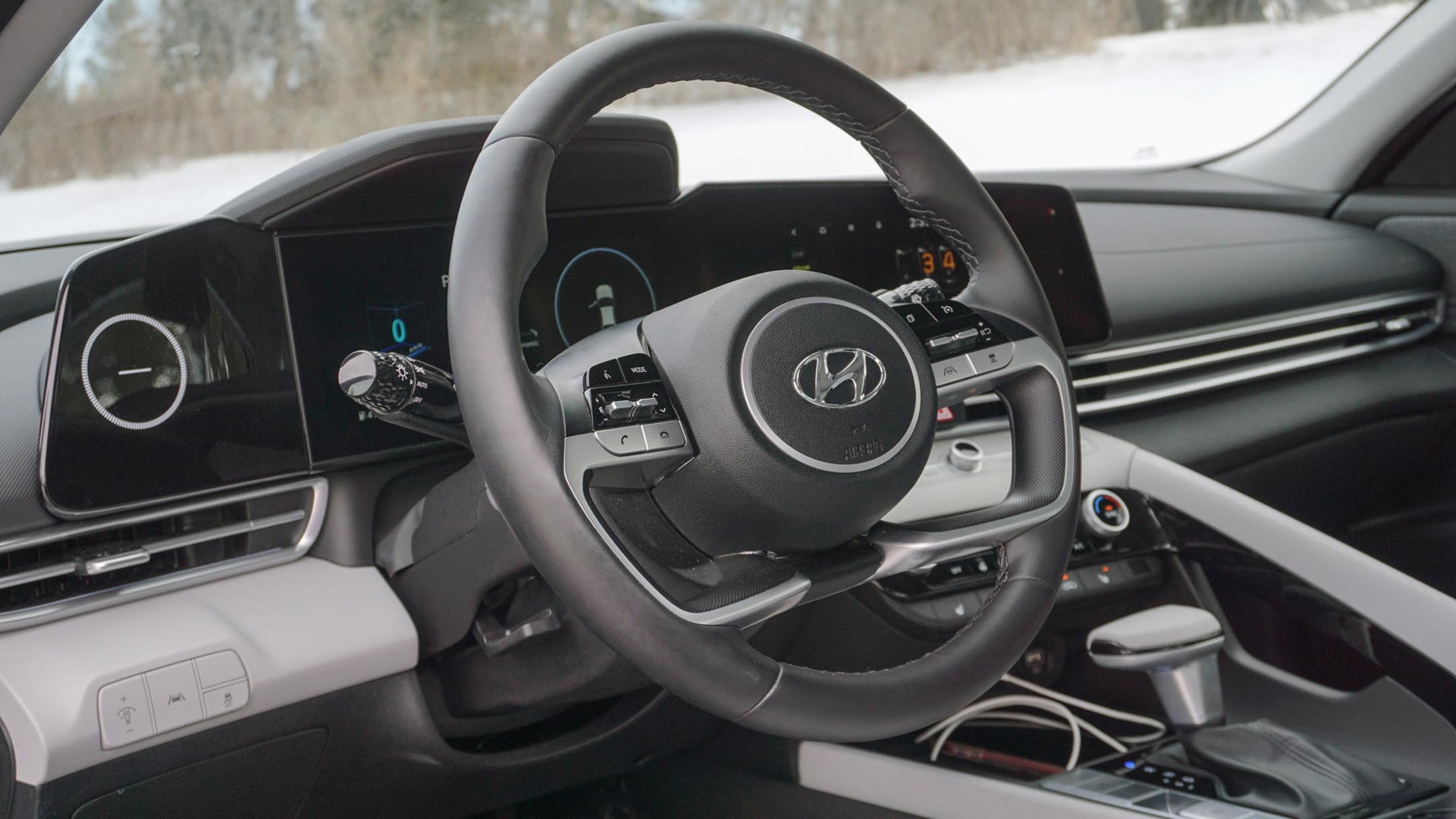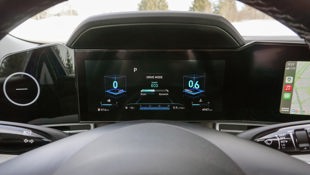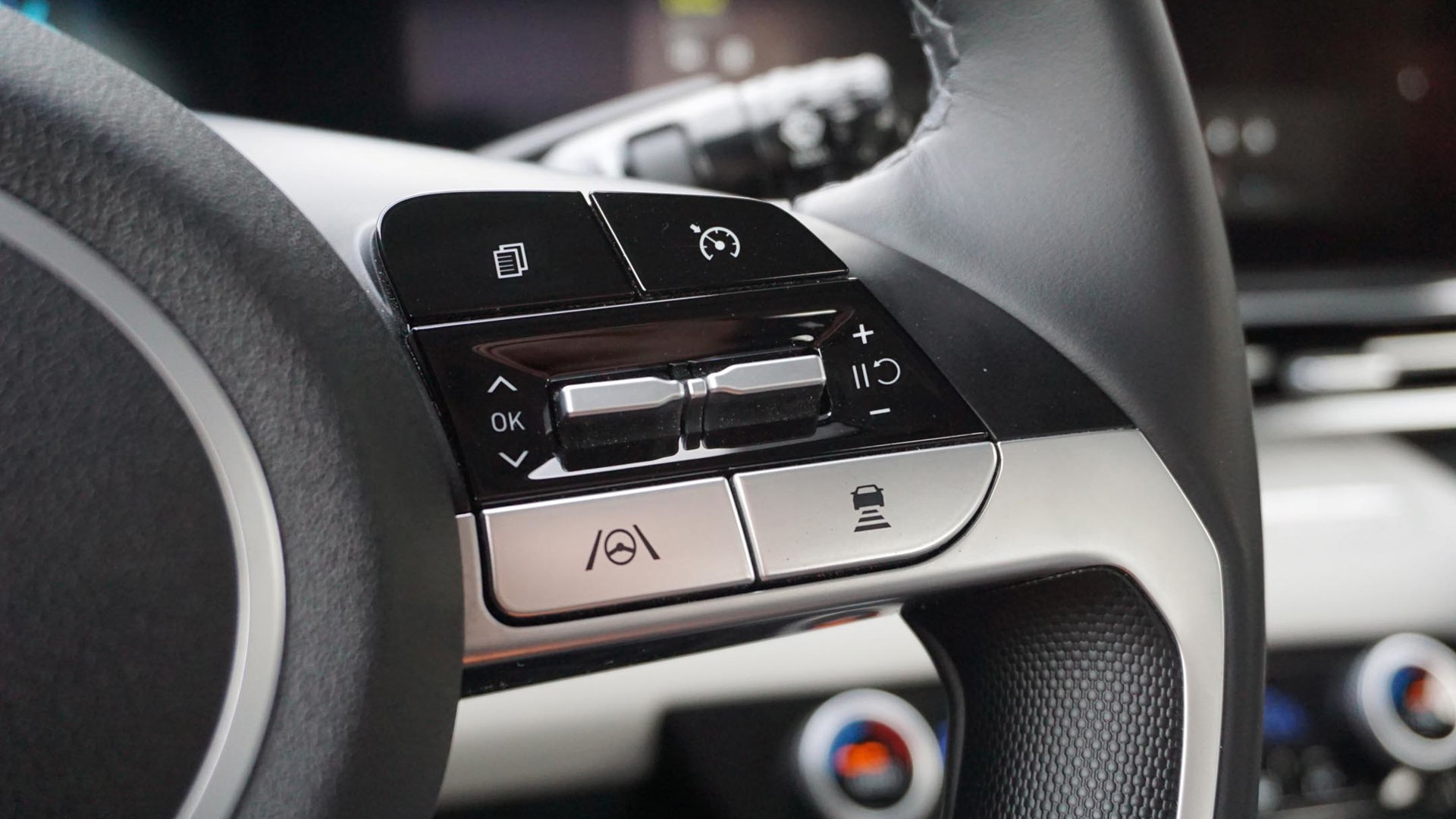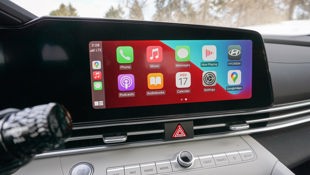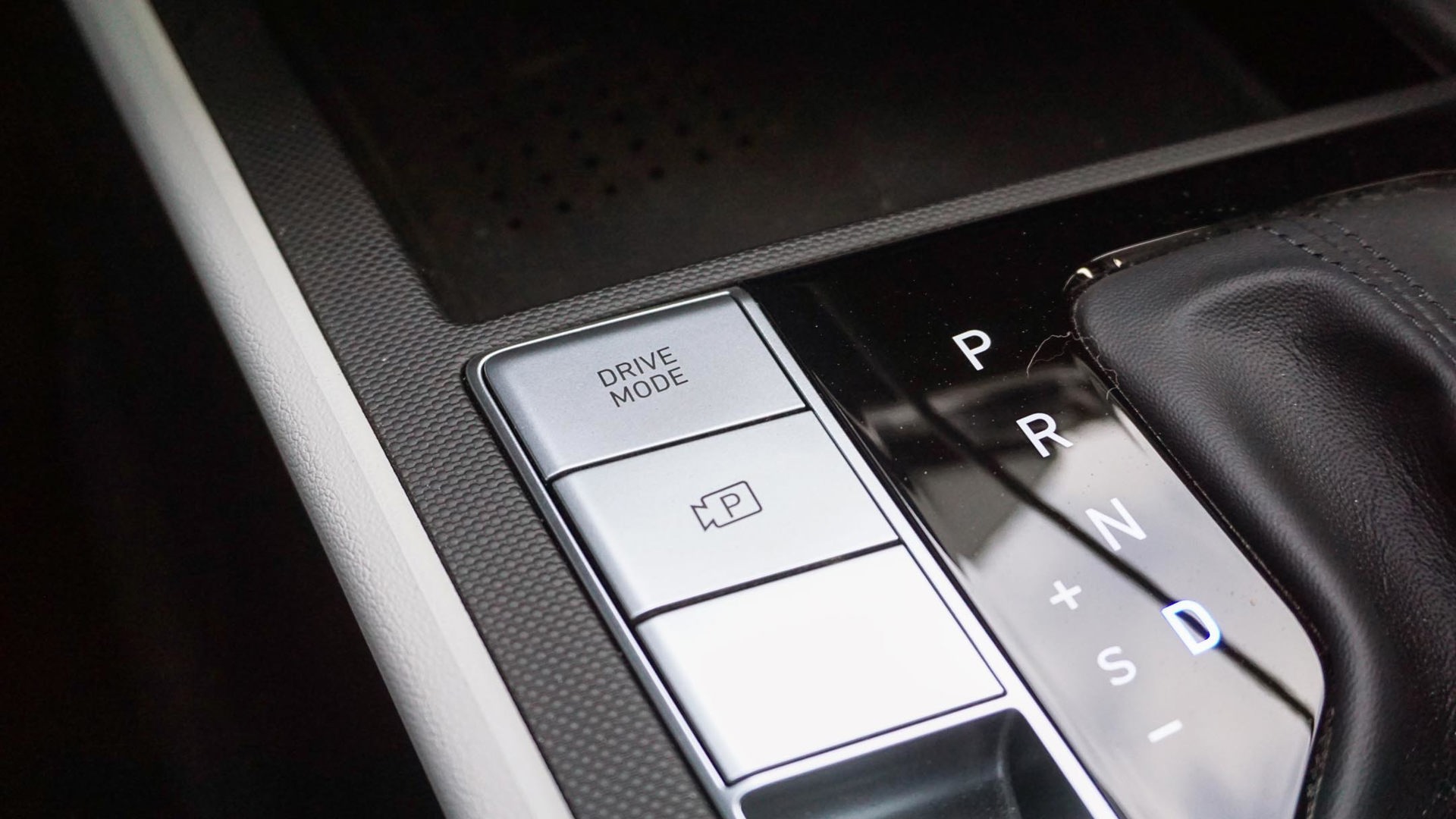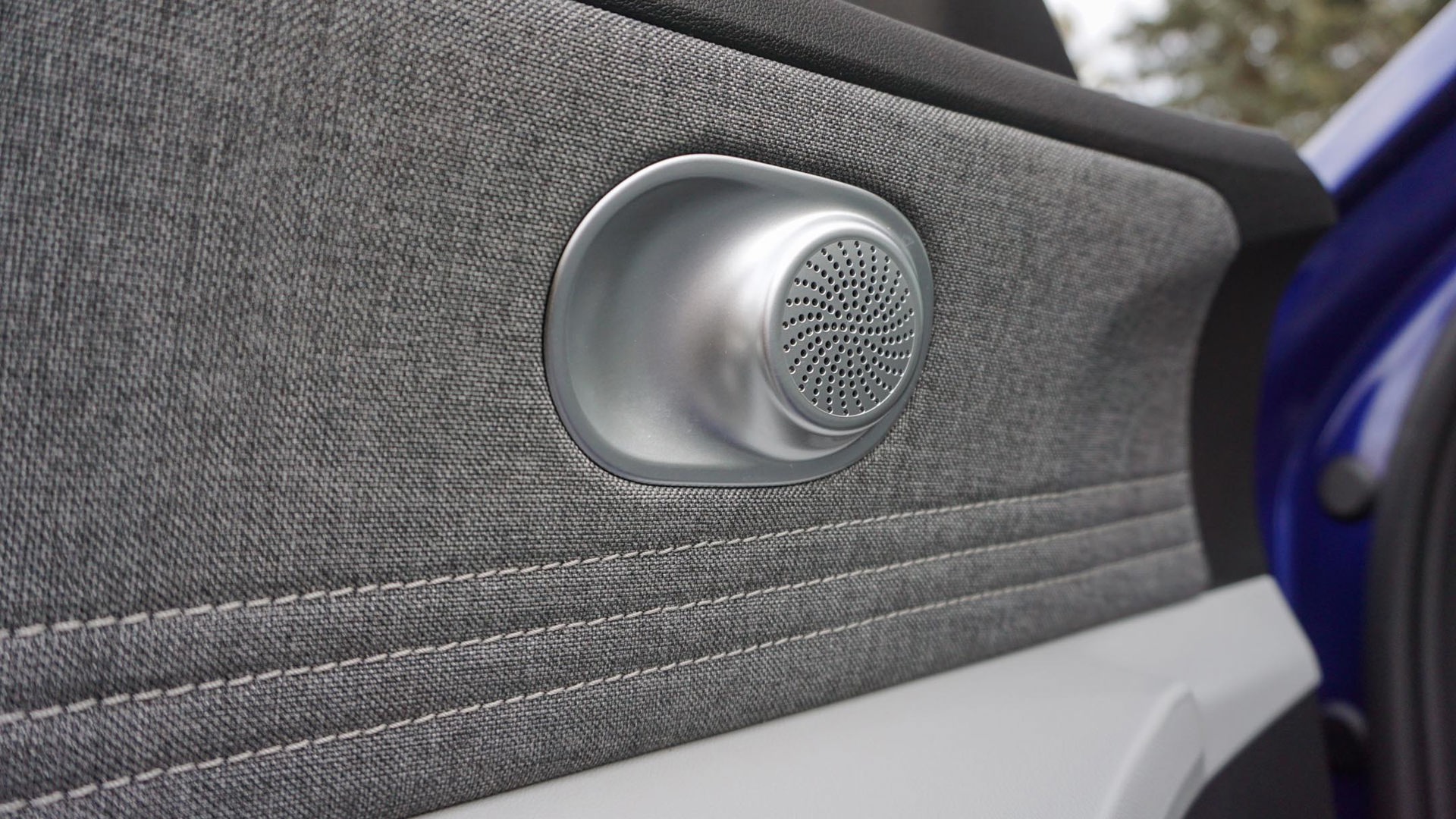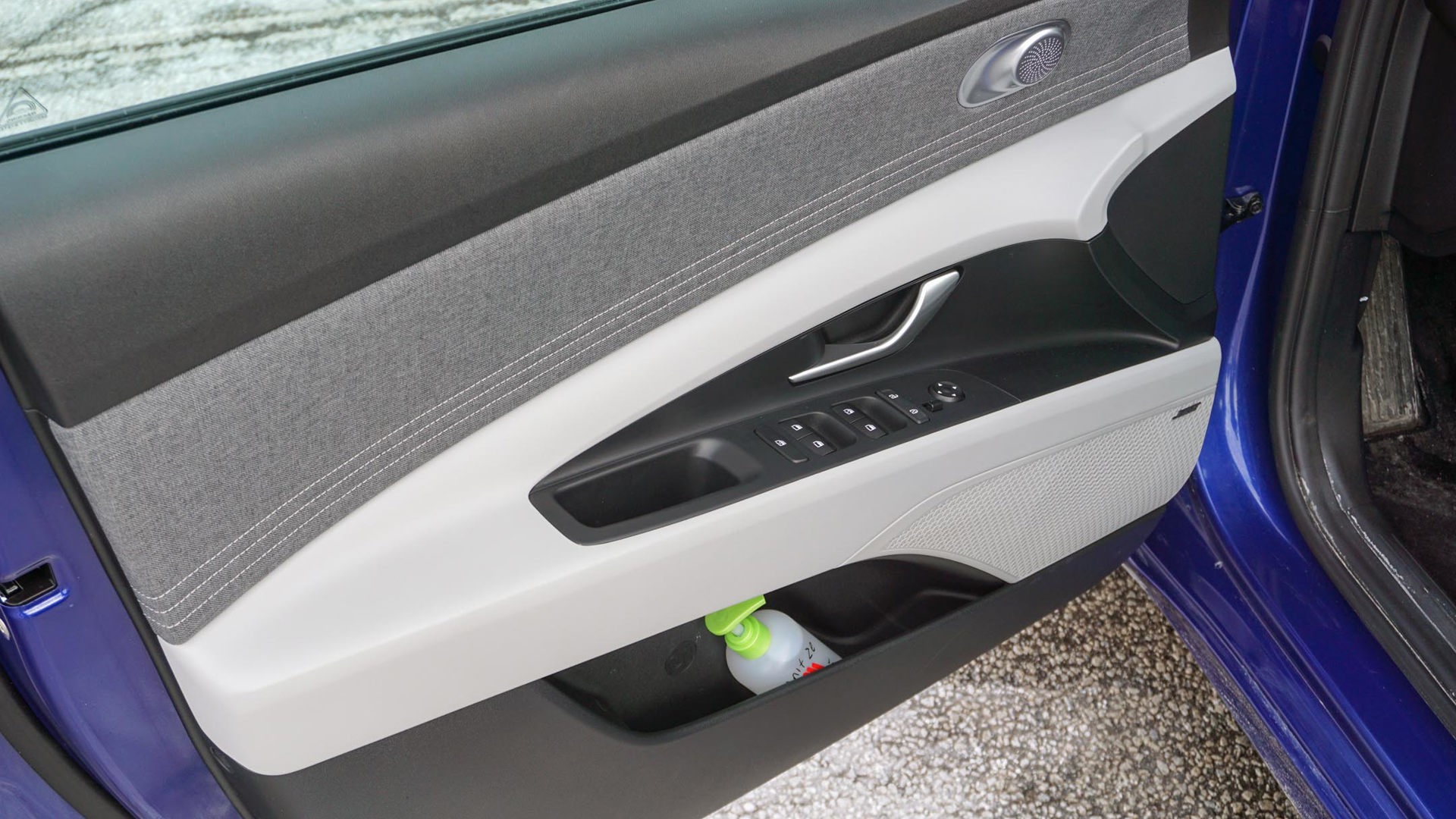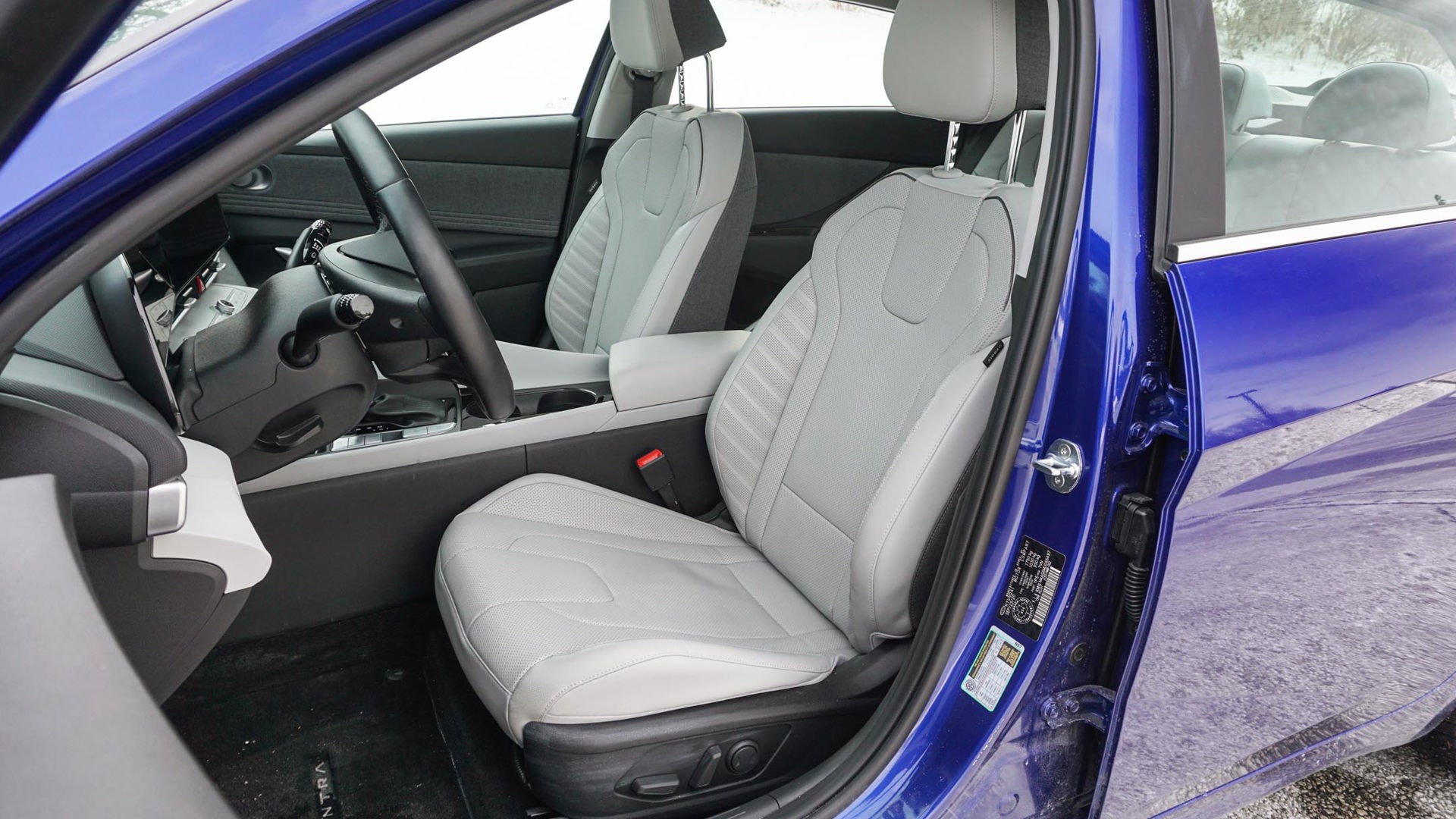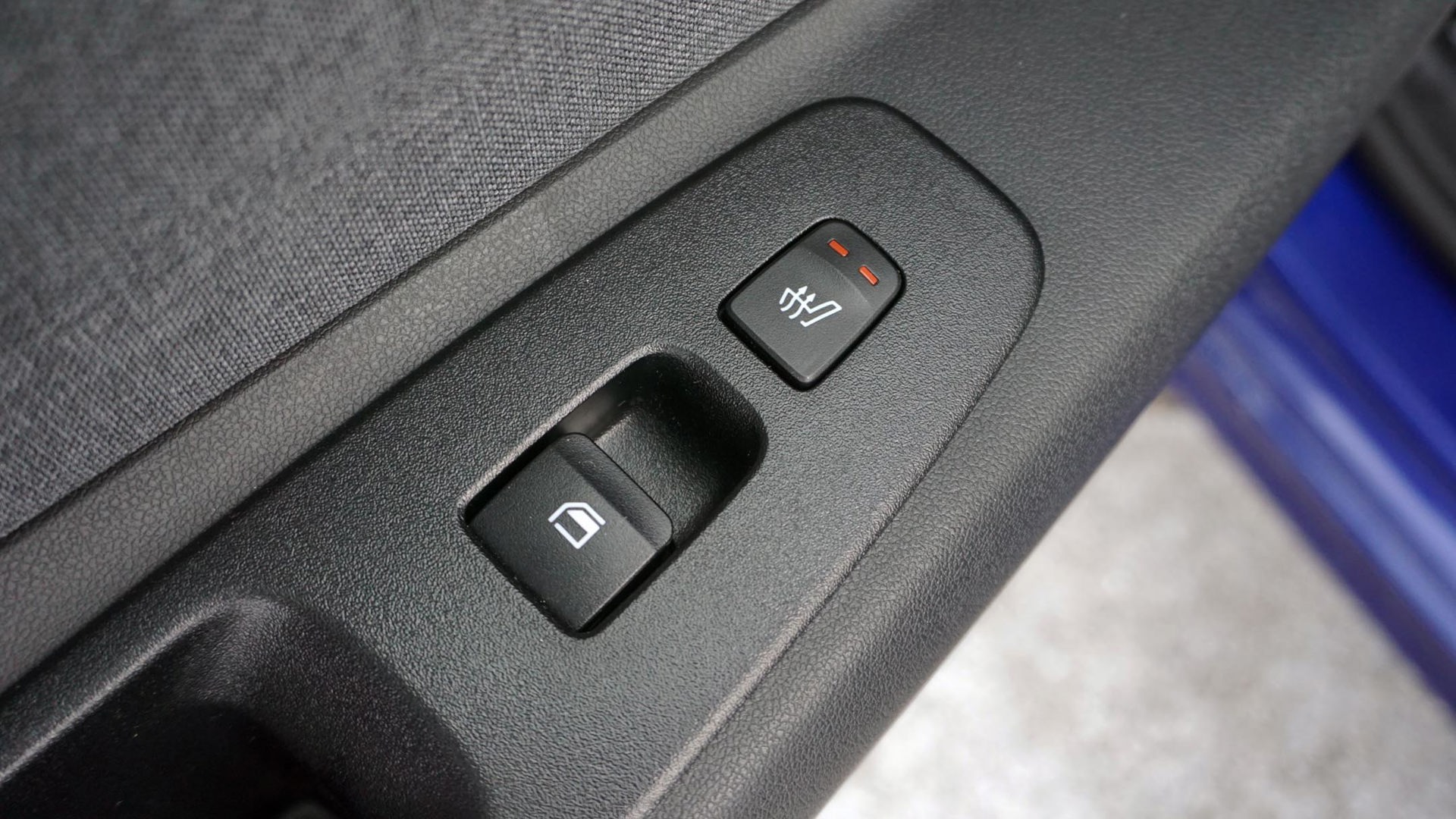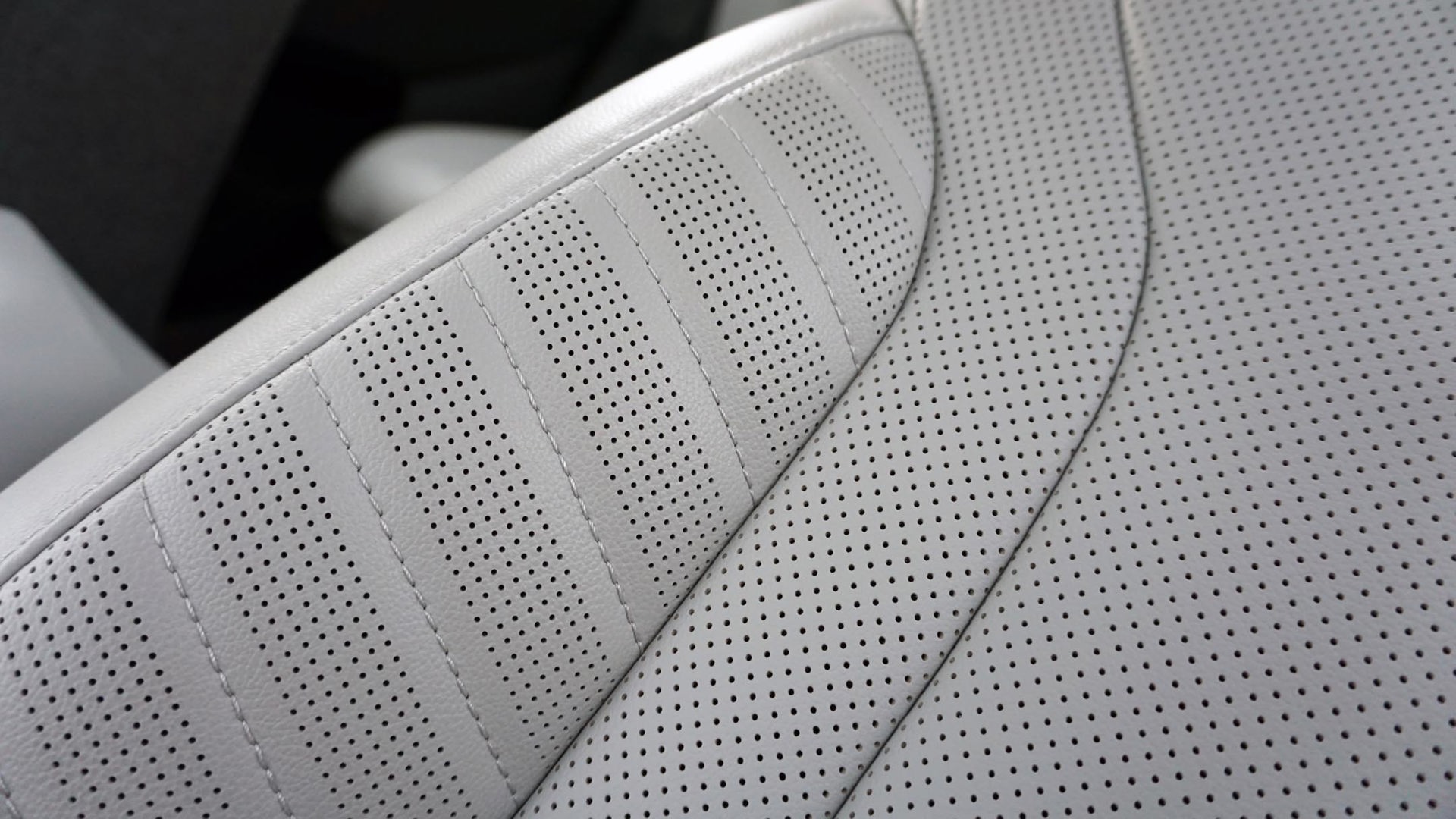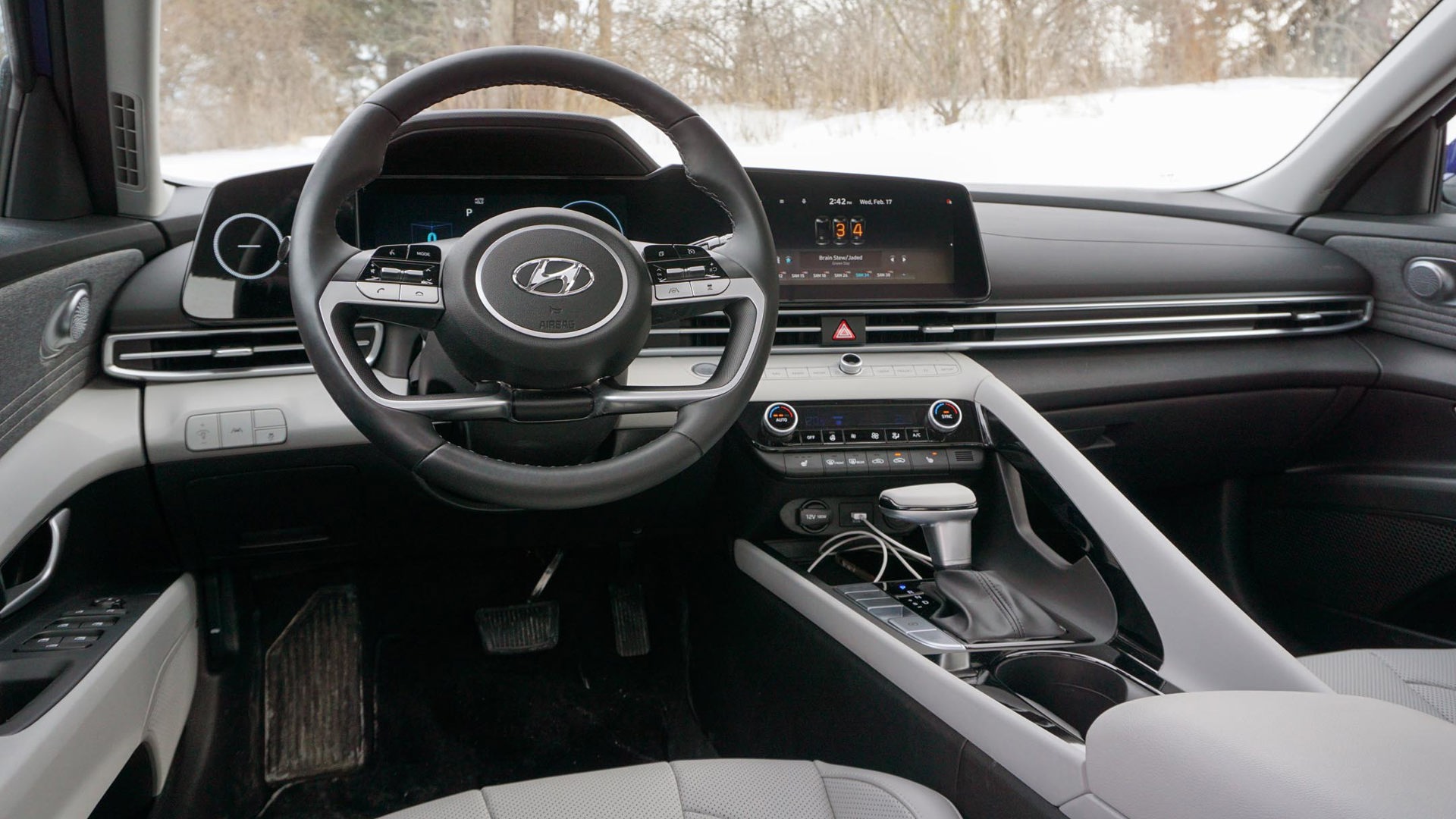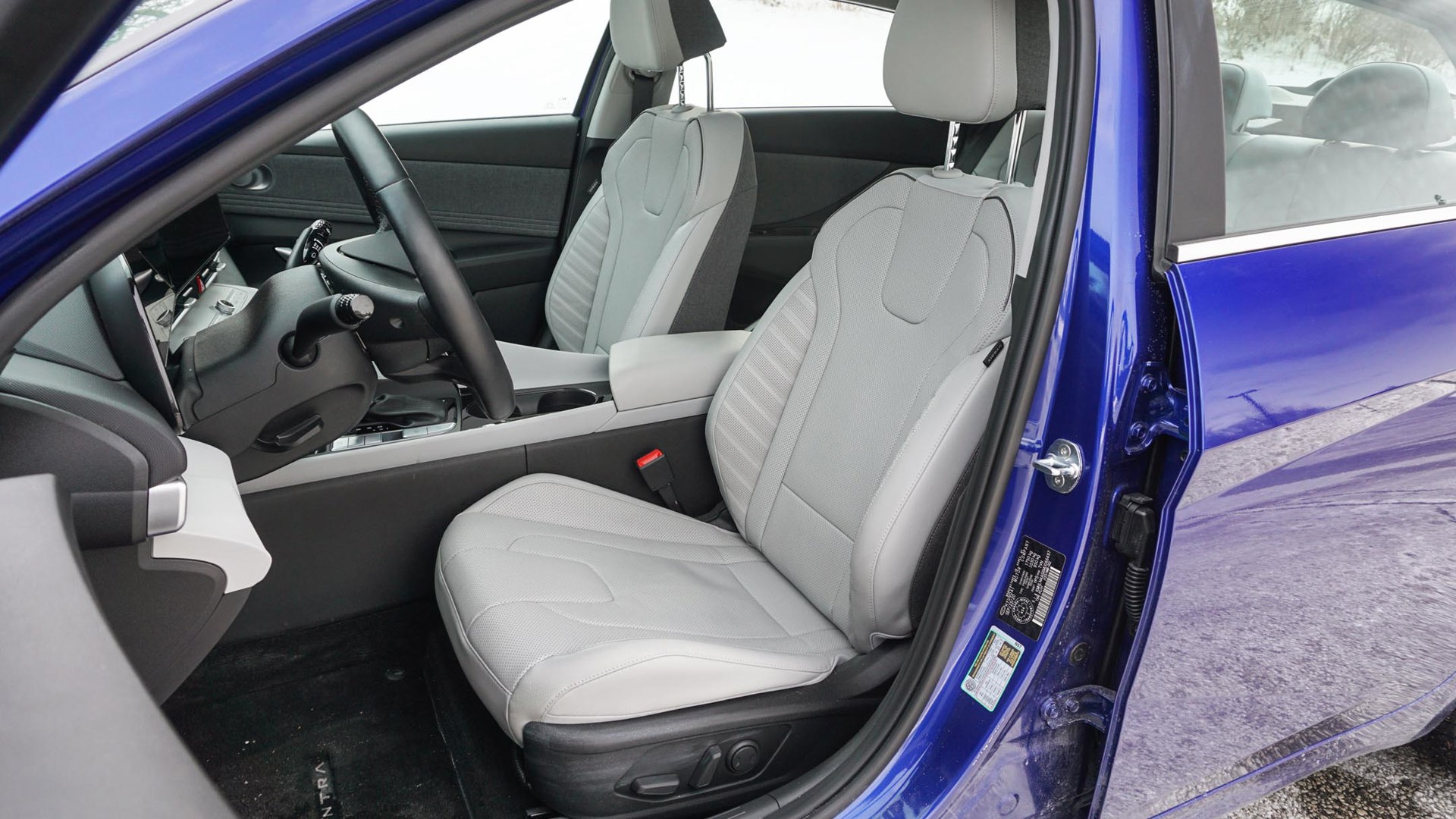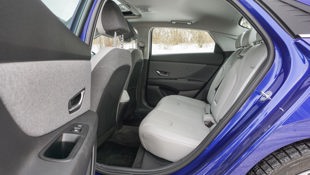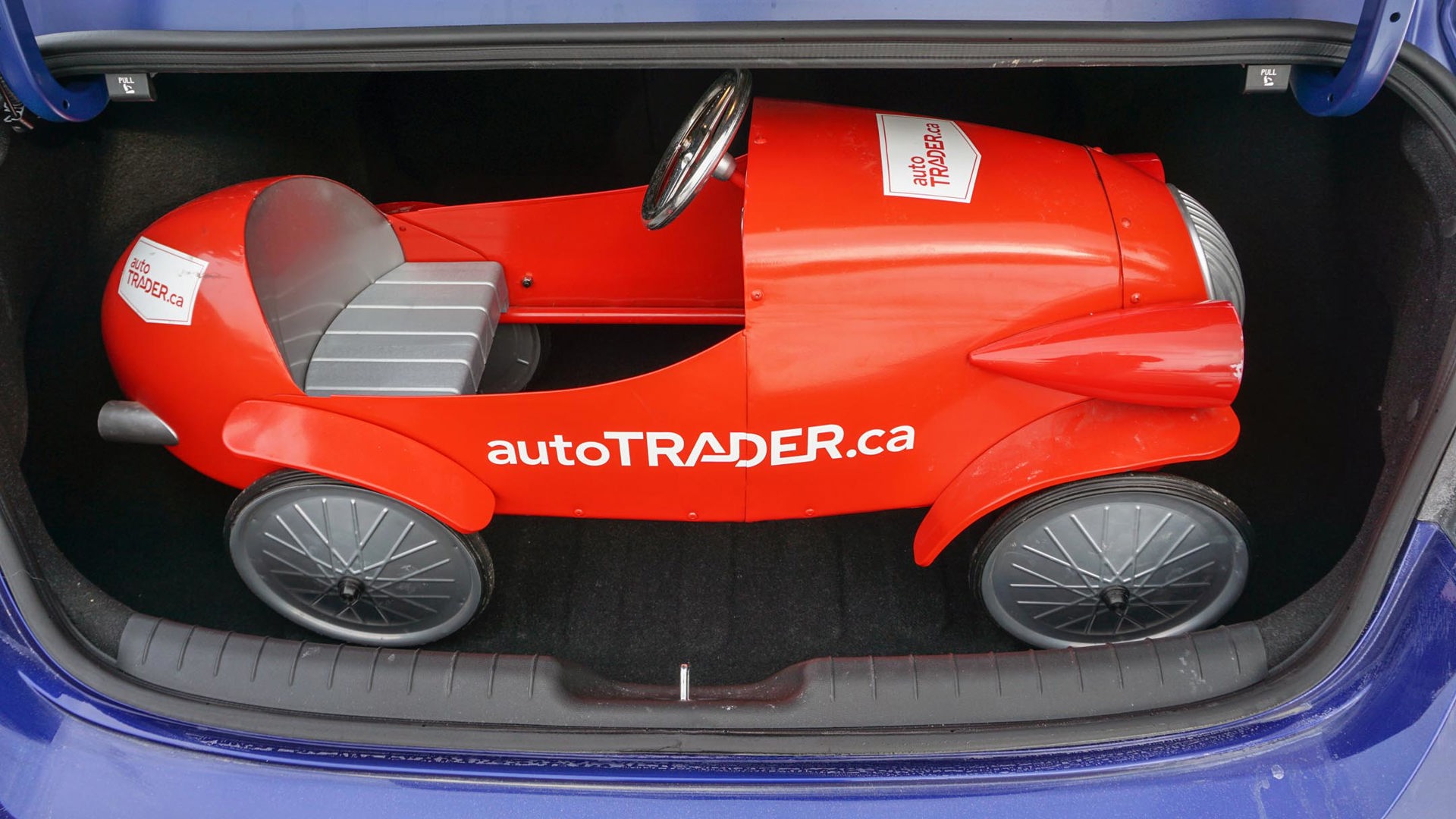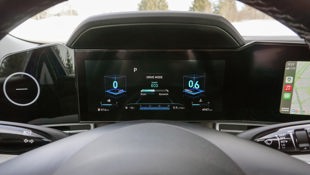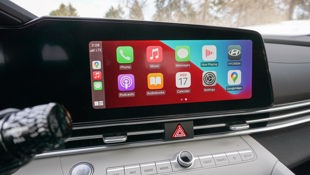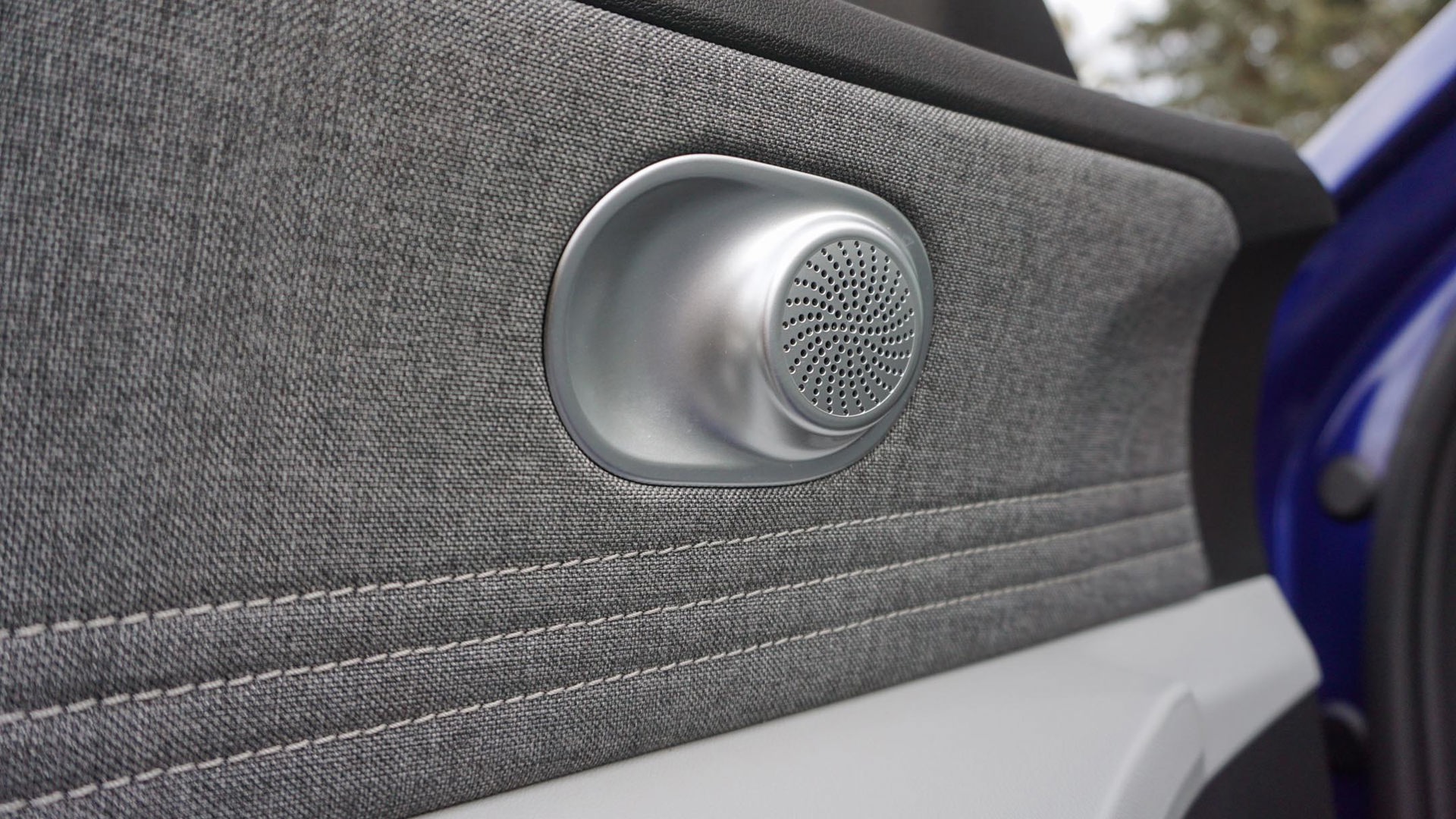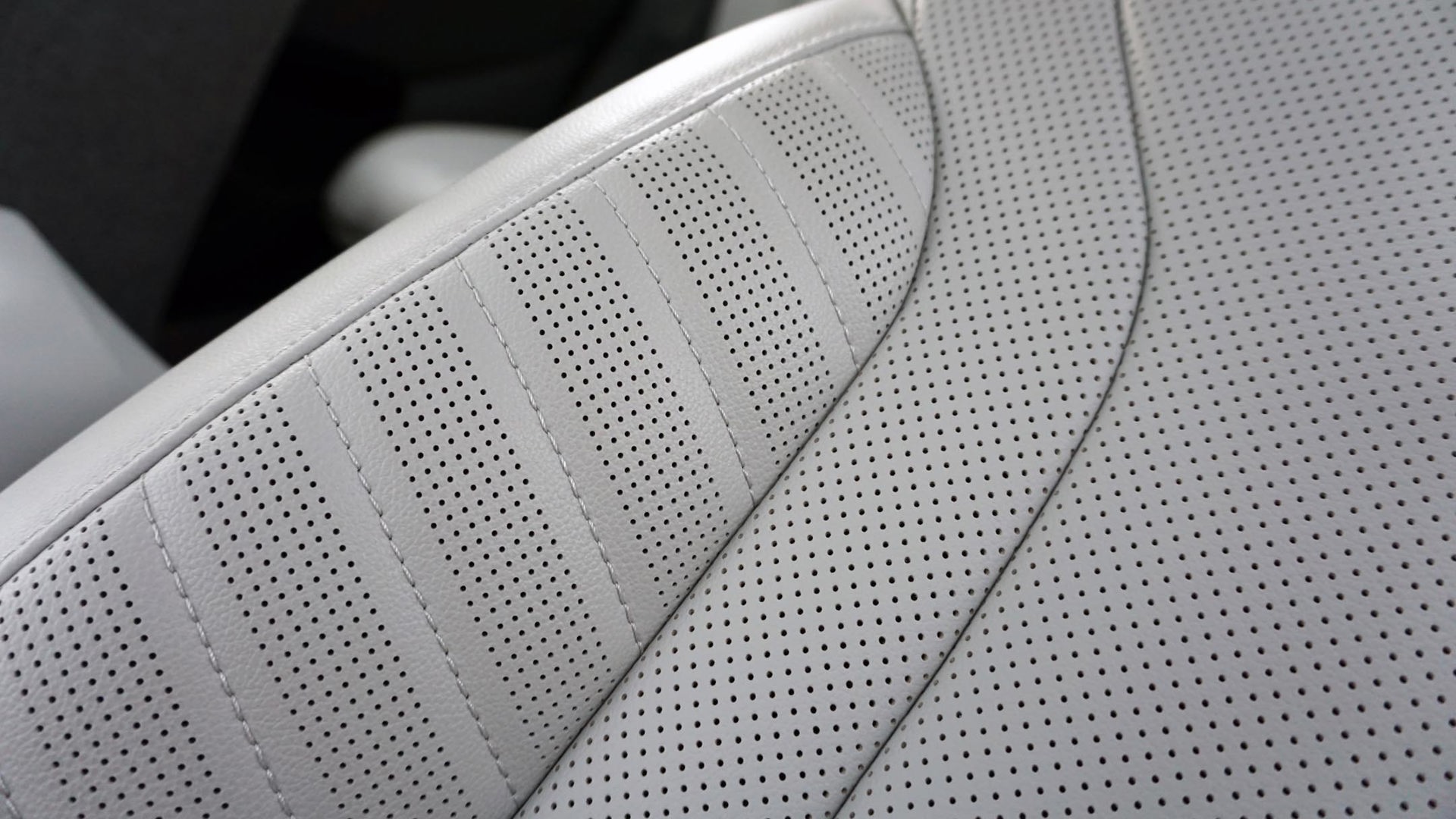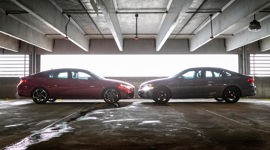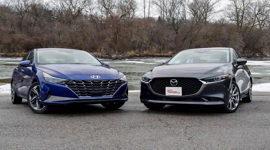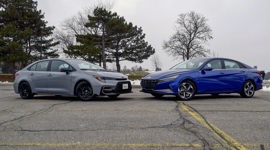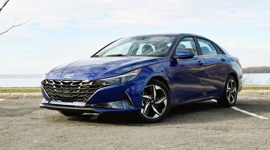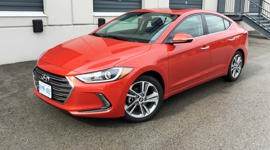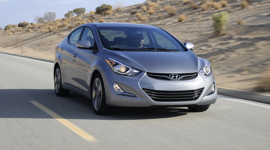 AutoTrader SCORE
AutoTrader SCORE
-
STYLING9/10
-
Safety8/10
-
PRACTICALITY9/10
-
USER-FRIENDLINESS9/10
-
FEATURES9/10
-
POWER10/10
-
COMFORT9/10
-
DRIVING FEEL10/10
-
FUEL ECONOMY9/10
-
VALUE9/10
Last year, Nissan put the small sedan segment on notice with a seriously improved – and impressive – Sentra.
And while an overhauled Honda Civic will soon be on its way, it’s the 2021 Hyundai Elantra that has already set a new standard for what this compact class of cars is capable of. It’s priced competitively, good on gas, and can be fitted with an impressive array of features – all while barely breaking $30,000 before tax in its most expensive getup. Even the cheapest version comes with stuff you’d expect these days for its sub-$20,000 sticker price like heated front seats and touchscreen infotainment, and some you might not like wireless Apple CarPlay and Android Auto connections.
But it’s not just the features it can be fitted with that make the redesigned Elantra such an outstanding product. No, it’s how it takes all of those and bundles them in such a well-balanced and well-built package that makes this compact sedan the one to beat.
Features: 9/10
But first, about those features. Hyundai (along with sister brand Kia) helped usher in the era of trickle-down technology in which we’re currently living, so it should come as no surprise that the latest Elantra is about as good as it gets in that regard.
The entry-level trim still comes with a manual transmission to keep the starting price low for marketing purposes – $19,624 with freight but before tax, for those keeping score at home – but stuff like alloy wheels, heated front seats, an eight-inch touchscreen display, and wireless hookups for both Android and iOS interfaces are included. For those who’d rather not row their own gears, an optional automatic transmission can be had for $1,900 and it also comes with some advanced safety stuff – but more on those shortly.
The mid-grade Preferred sees marginal gains in both comfort and convenience, with extras like a heated steering wheel, push-button start, two extra speakers for a total of six, and a hands-free trunk release, among others, for its $23,624 sticker price. There’s also a $1,500 package that can be added to the automatic-only trim that includes a power sunroof, dual-zone automatic climate control, and satellite radio. None of it’s exactly stand-out stuff, but it’s a decent package considering the $25,124 Hyundai’s selling it for.
The Elantra Ultimate, meanwhile, adds adaptive cruise control, leather upholstery, an eight-speaker stereo, and a wireless phone charger on top of everything from that upgraded Preferred model for its $27,324 starting price. But it’s the optional technology pack that sets this compact apart from the competition. Forget the ambient lighting, heated rear seats, and parking sensors the package adds; it’s the expansive screen real estate that turns the Elantra into a true show-stopper.
It’s in these fully loaded digs that a pair of 10.25-inch digital displays dominate the dash – one that replaces the gauge cluster, and another that serves for infotainment duty. The screens (alongside this tester’s two-tone interior finish) totally transforms the space into one that looks and feels more modern than anything else in the segment, and maybe even beyond.
Safety: 8/10
For the $2,700 the tech package adds to the top trim’s total it also includes Hyundai’s so-called highway driving assist that combines the car’s adaptive cruise control and lane-centring functions into one that requires less driver input than those features would on their own. While the driver’s hands have to be on the wheel for the system to work, it will help with steering inputs while maintaining a set speed and adjusting for any preceding vehicles.
It all worked well during testing, though not quite as smoothly as Nissan’s similar system offered in the overhauled Rogue, with the self-steering inputs just a little more noticeable. For anyone uncomfortable using this type of semi-autonomous technology, the Elantra’s adaptive cruise control can still be enabled without the steering assist, as can the lane-keep assist that comes in every version of the car except the base manual model.
The advanced safety systems are perhaps the one and only way Hyundai is a clear step behind the competition in this compact class, with every version of both the Honda Civic and Toyota Corolla including everything from automatic emergency braking up front to lane-keep assist and adaptive cruise control – yes, even the cheapest Corolla with plastic wheel covers and a manual transmission.
While every Elantra has the basics covered with airbags, traction control, and child seat anchors, the manual-equipped Essential trim goes without any of the advanced stuff. Opting for the automatic transmission adds lane-departure warning and lane-keep assist, automatic high-beams, and forward emergency braking with pedestrian detection, while the Preferred trim adds blind-spot monitoring with rear cross-traffic alert, and a safe exit warning system that alerts of approaching traffic from behind – helpful when street parking in the city.
Finally, the Ultimate trim adds to that list cyclist detection to the front auto braking, and adaptive cruise control that works in stop-and-go traffic, as well as the option to add the technology pack that includes the enhanced adaptive cruise control, rear parking sensors, and reverse automatic braking that works at parking-lot speeds.
Value: 9/10
That Hyundai doesn’t include as much advanced safety equipment as some key competitors does impact the Elantra’s value proposition, but only slightly. Because it’s still priced well next to both the Civic and Corolla, as well as just about every other entry in the compact sedan segment. It’s not as cheap as the subcompact Accent hatchback that the brand killed off, but it’s one of the few sedans like it left on the market that carries a sub-$20,000 starting price before tax. There’s the Kia Forte ($19,540), the smaller Nissan Versa ($18,168), and this Elantra. That’s it. Perhaps more crucially, though, looking at the entire compact sedan segment, only Nissan’s Versa and Sentra are cheaper than the Elantra at the top of their respective lineups, while neither can come close to the kind of technology and features Hyundai has stuffed inside its small sedan.
User Friendliness: 9/10
All of it’s incredibly approachable, too, starting with an infotainment interface that remains one of the best on the market. It’s been spruced up to look and feel a little more modern in the Elantra, but it will be familiar to anyone who’s used Hyundai’s head units in the recent past while presenting an incredibly small learning curve for anyone who hasn’t.
While autoTRADER.ca has yet to test the car’s eight-inch head unit, the responsiveness of the larger touch display proved flawless, even during deeply cold conditions, while the Bluetooth, Android Auto, and Apple CarPlay connections worked without issue. There is a noteworthy niggle about those last two, however. Because while the Ultimate trim includes a wireless phone charger, both phone-mirroring functions require hard connections with the upgraded display, making that charger redundant. And while those connections are wireless with the eight-inch touchscreen, only the Ultimate trim has a wireless charger to go with them, meaning devices must be plugged in to keep their batteries topped up on the go.
Minor annoyances aside, this is as easy a car as any to simply get in and drive. The steering wheel features buttons and rockers that are easy to understand at a glance, while the HVAC system uses good old-fashioned switchgear to adjust temperature and fan speed. The cabin’s design features a cockpit-like approach that puts key features well within reach of the driver, while outward visibility is good in all directions except directly through the back window, with a tall parcel shelf and shallow slope to the glass creating something of a narrow opening to see through.
Practicality: 9/10
The relatively tall position of that shelf behind the rear headrests may hinder rearward visibility (albeit slightly), but it contributes to a rather cavernous trunk. It officially measures 402 L, according to Hyundai, which is similar to others in the segment. And just like both the Corolla and the Sentra, the autoTRADER.ca cargo-testing pedal car managed to fit inside without issue – something that can’t be said about the Hyundai Venue subcompact crossover that’s comparably priced.
The Elantra also has the Venue beat both on paper and in practice when it comes to legroom, with the nearly 100 mm (four inches) more it has in the back in particular making a significant difference in everyday usability. It also offers slightly more cabin width, though the Venue tops it in terms of back-seat headroom (as does the Corolla). The Elantra is also somewhat short of the kind of small-item storage that’s handy for stashing stuff like glasses cases and gum containers. The door pockets are impossibly small, while the covered console bin is fairly deep but not especially wide.
Styling: 9/10
Going back to the driver-centric cabin design, while autoTRADER.ca expert Sami Haj-Assaad wasn’t particularly impressed with the way the handle on the side of the centre console splits the front half of the cabin in two, this author was less bothered by it. It’s a design element that can also be found in the sleek and stylish Lexus LC – not bad company for this little sedan to keep.
However, where the cabin’s design starts to go awry is when it’s done up with a two-tone finish like this tester, where the plastic door panel and speaker cover is a different colour on the driver’s side than the passenger side. Symmetry has been a key tenet of car design for decades with good reason, and this would be one of them. Once noticed, it’s all but impossible to unsee the different door panels. And while the Ultimate trim can be ordered with an all-black interior instead, thus eliminating the off-balance look, the contrast cabin is part of what makes the space look so modern and inviting, something that gets lost with the monotone motif.
Outside, the design is a chiselled one, with sharp creases spanning the bodysides, and aggressive headlights set against a gaping grille. Around back, the trunk lid extends outwards with what looks a little like an integrated lip spoiler, and it’s among the coolest design elements in the class. Hyundai has also delivered another set of simple-yet-stylish wheels, the ones here measuring 17 inches and mixing machined and painted surfaces to perfection.
Comfort: 9/10
Back inside, the cabin is also the source of a familiar complaint about Hyundai’s cars: substandard plastics. Some of the stuff used on the dash and door panels, as well as that handle on the console, feels like it could be used to make those cheap little green army men, and isn’t in keeping with what’s a well put together interior otherwise.
Just about every other surface inside is as nice to the touch as it is on the eyes, with the leather upholstery on the seats in particular feeling like a slight step upmarket from much of the competition. Those front seats are supremely comfortable and supportive, too – rare compliments in this class – while the sound deadening in this top-of-the-line tester kept outside interference to a minimum.
Power: 10/10
The Elantra’s powertrain may look a little underwhelming on paper, though it’s anything but in practice. Make no mistake: the 2.0L four-cylinder here is about efficiency first and foremost, yet this car manages to do more with its relatively meagre output than others in the segment can.
Officially, the engine makes 147 hp and 132 lb-ft of torque – not especially impressive figures. Yet it manages to feel stronger than the numbers would suggest, with plenty of pull throughout the rev range. Acceleration is swift enough that passing or merging is never perilous, instead inspiring confidence as the needle sweeps the speedometer.
Making the powertrain’s performance even more impressive is the continuously variable transmission (CVT) that channels that output to the front wheels, which proved itself to be an unlikely highlight during testing. The complaints that are typical of this type of transmission are nowhere to be found here, with none of the rubber-band sensation or incessant buzzing that’s dogged CVTs for years. Simulated shift points make it feel like a conventional automatic, and it’s only when accelerating aggressively that it sounds like it’s working hard.
Fuel Economy: 9/10
Still, efficiency remains one of this powertrain’s most impressive attributes, and deeply cold and snowy conditions – not to mention the requisite winter tires – weren’t enough to throw the Elantra off its A-game. An initial evaluation drive at the tail end of a massive snowfall saw an accumulated average consumption of 5.7 L/100 km. That’s better than the car’s official combined rating of 6.7 L/100 km, and is especially impressive given the factors at play. The final tally during testing finished closer to the official rating, but only after a full day of filming during yet another winter storm that resulted in plenty of time spent idling to keep the windows clear and the cabin warm.
Driving Feel: 10/10
Given that focus on fuel efficiency, perhaps the Elantra’s most surprising quality is how well balanced and refined it is to drive. While the sharp throttle response provides enough quickness for even the narrowest of margins when merging, it’s the way the ride and handling come together that stands out even more.
Ride quality is Reebok Pump perfect, with a well-cushioned firmness that’s both comfortable and impressively agile. Yes, this is still a compact car, which puts you closer to deep potholes and sewer grates; but the suspension damping does an admiral job of absorbing all but the very worst of what the road throws at it. The steering feels a little artificial and overboosted at times, but a satisfying amount of resistance has been dialled in while remaining relaxed enough to suit the daily drive.
The Verdict
Aside from some of the plastics inside, the 2021 Hyundai Elantra doesn’t look or feel anything like the economy car it is – especially when done up in its top trim with the available tech package. It’s brimming with style and personality, has among the best ride and handling in the segment, and still delivers the basics of an economy car like competitive pricing and impressive efficiency.
It also brings an abundance of choice to the table. No matter your budget, the Elantra is bound to deliver plenty of bang for your buck. It isn’t without a few quibbles – the mix-and-match smartphone solutions, the mismatched door panels, or, more importantly, the lack of adaptive cruise control throughout the lineup – but they’re all forgivable given how fantastic this car is overall.
Yes, there’s a new Civic on its way that will undoubtedly do what the Civic has always done and deliver lots to like. But at least for the time being, the redesigned Elantra is by far the best in its class.
| Engine Displacement | 2.0L |
|---|---|
| Engine Cylinders | I4 |
| Peak Horsepower | 147 hp @ 6,200 rpm |
| Peak Torque | 132 lb-ft @ 4,500 rpm |
| Fuel Economy | 7.5 / 5.7 / 6.7 L/100 km cty/hwy/cmb |
| Cargo Space | 402 L |
| Model Tested | 2021 Hyundai Elantra Ultimate w/Tech Package |
| Base Price | $28,299 |
| A/C Tax | $100 |
| Destination Fee | $1,725 |
| Price as Tested | $30,324 |
|
Optional Equipment
$200 – Intense Blue Paint, $200
|
|
